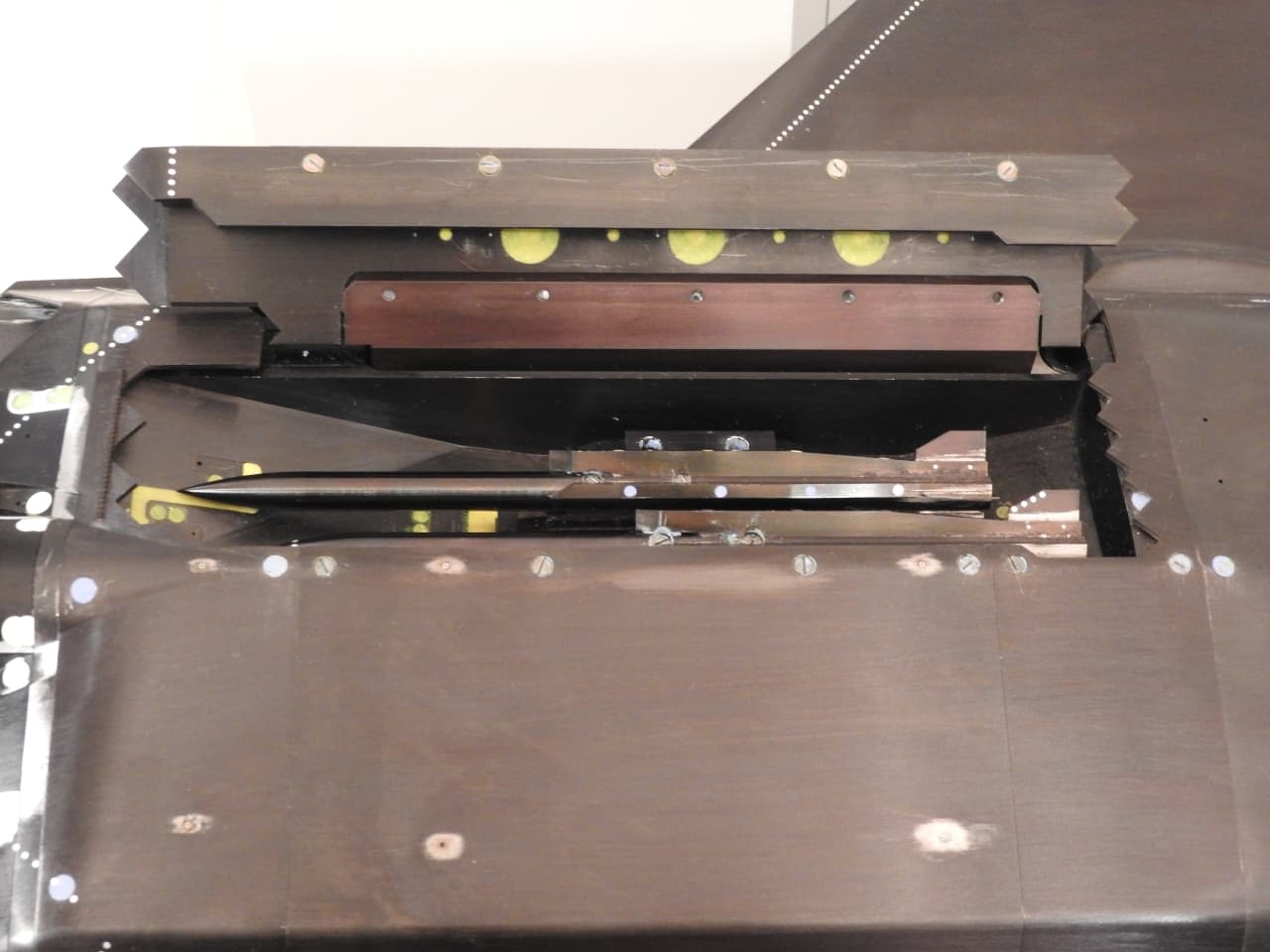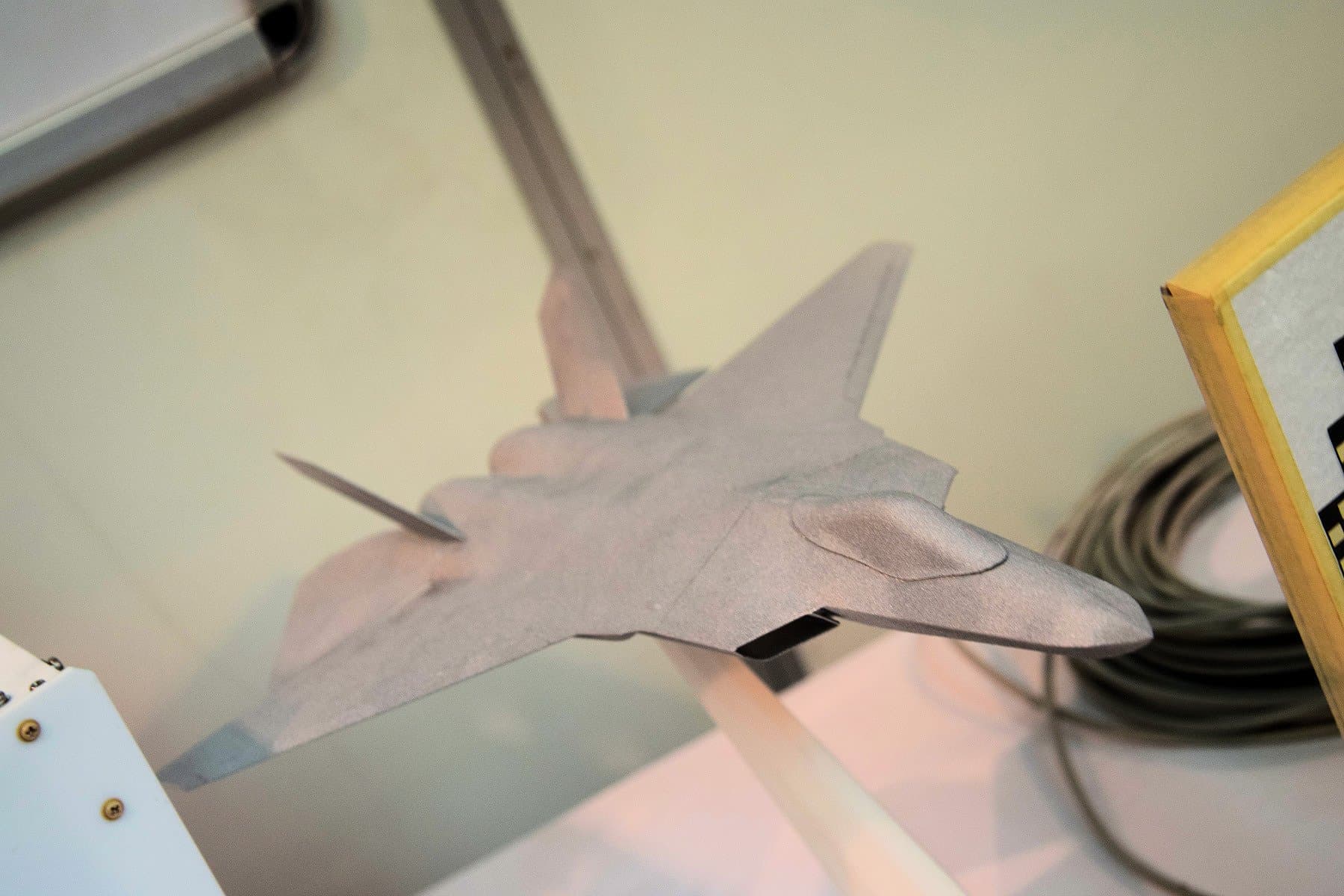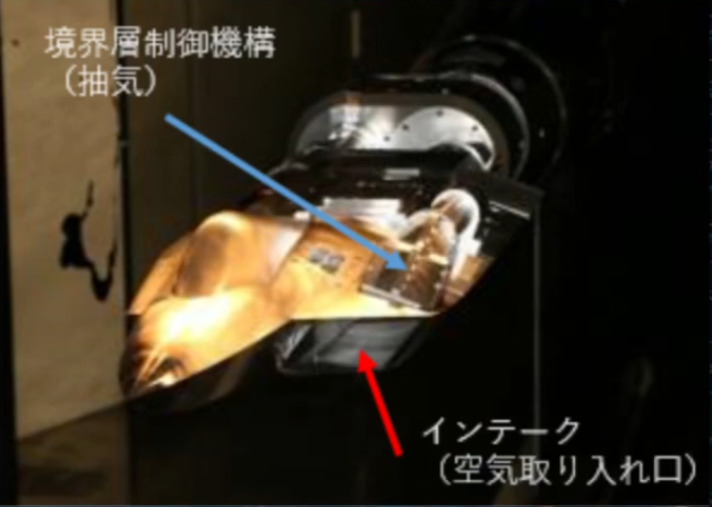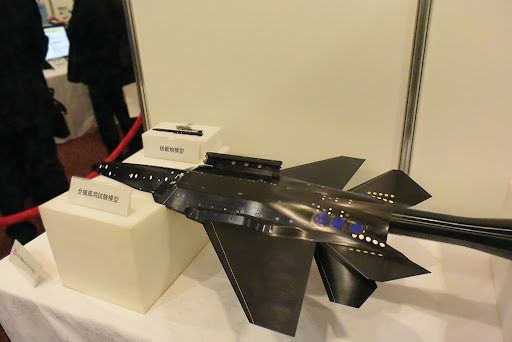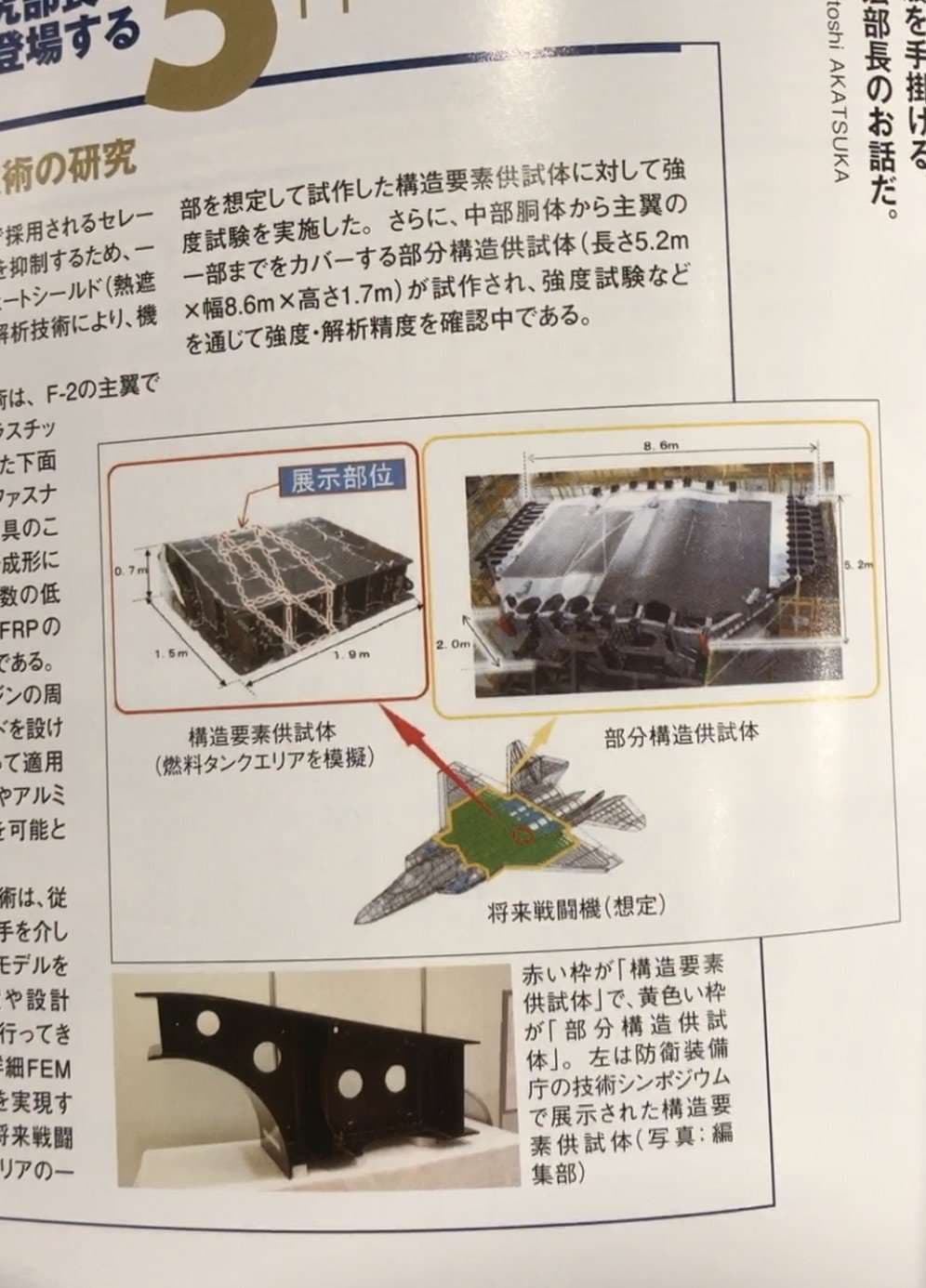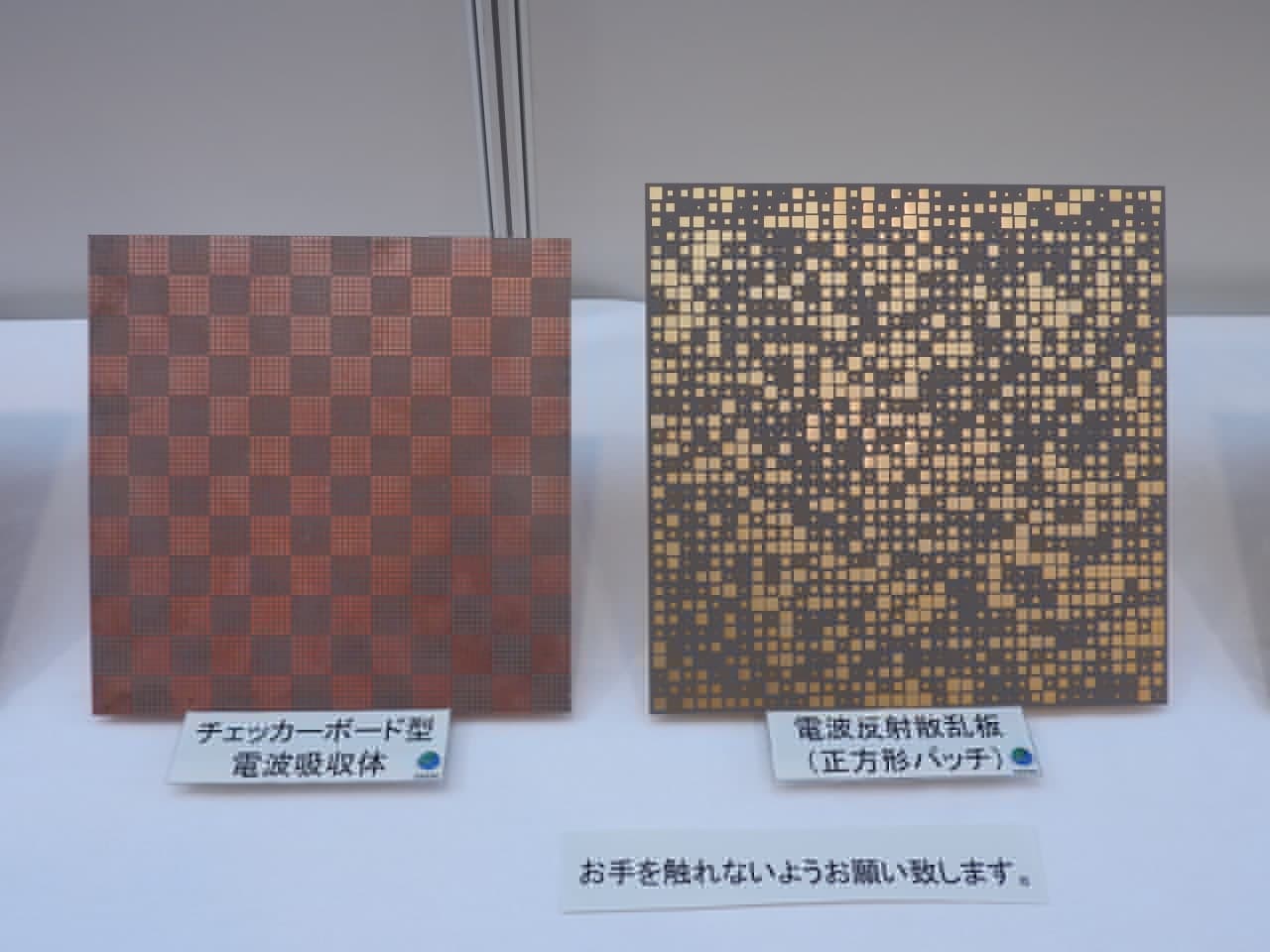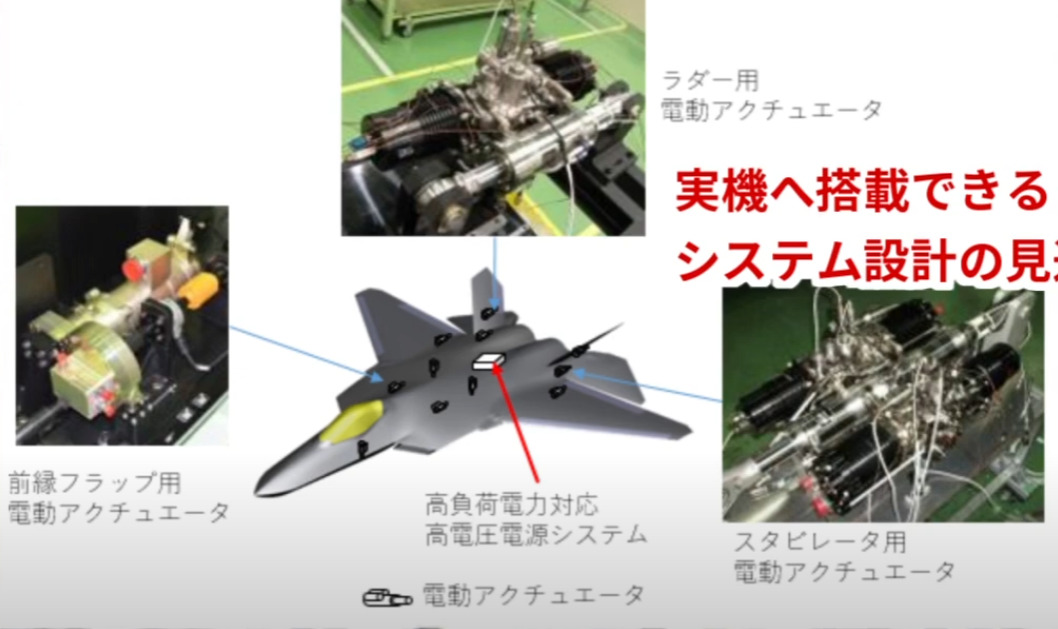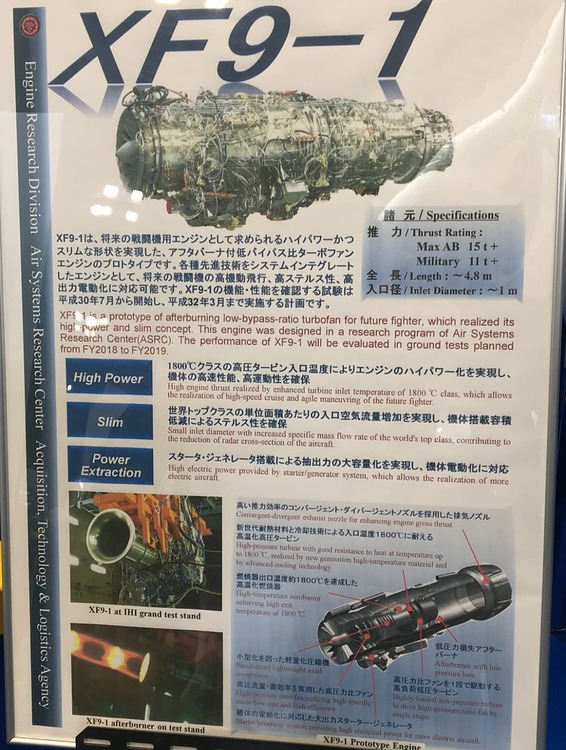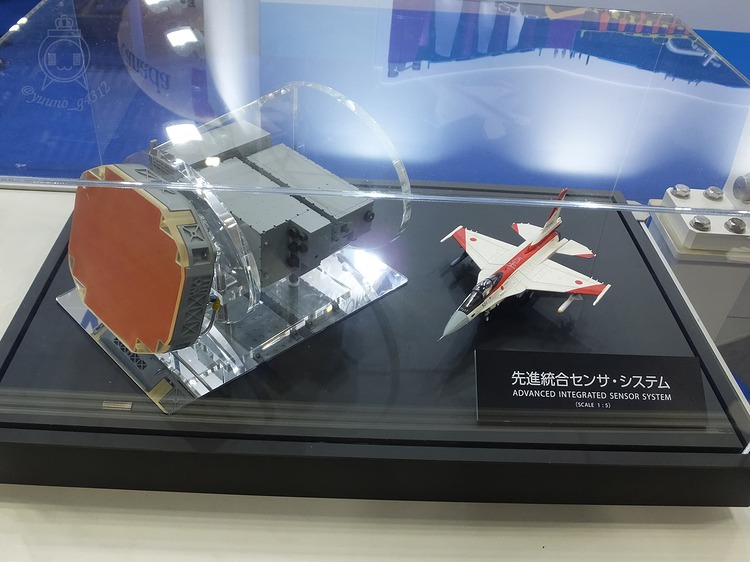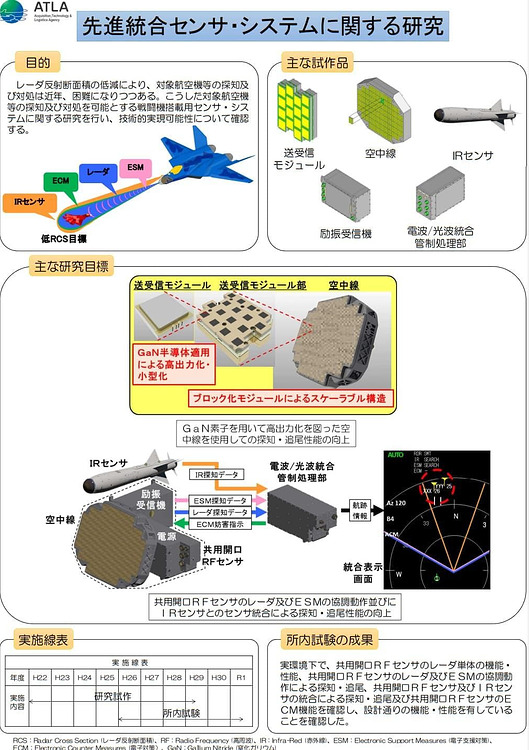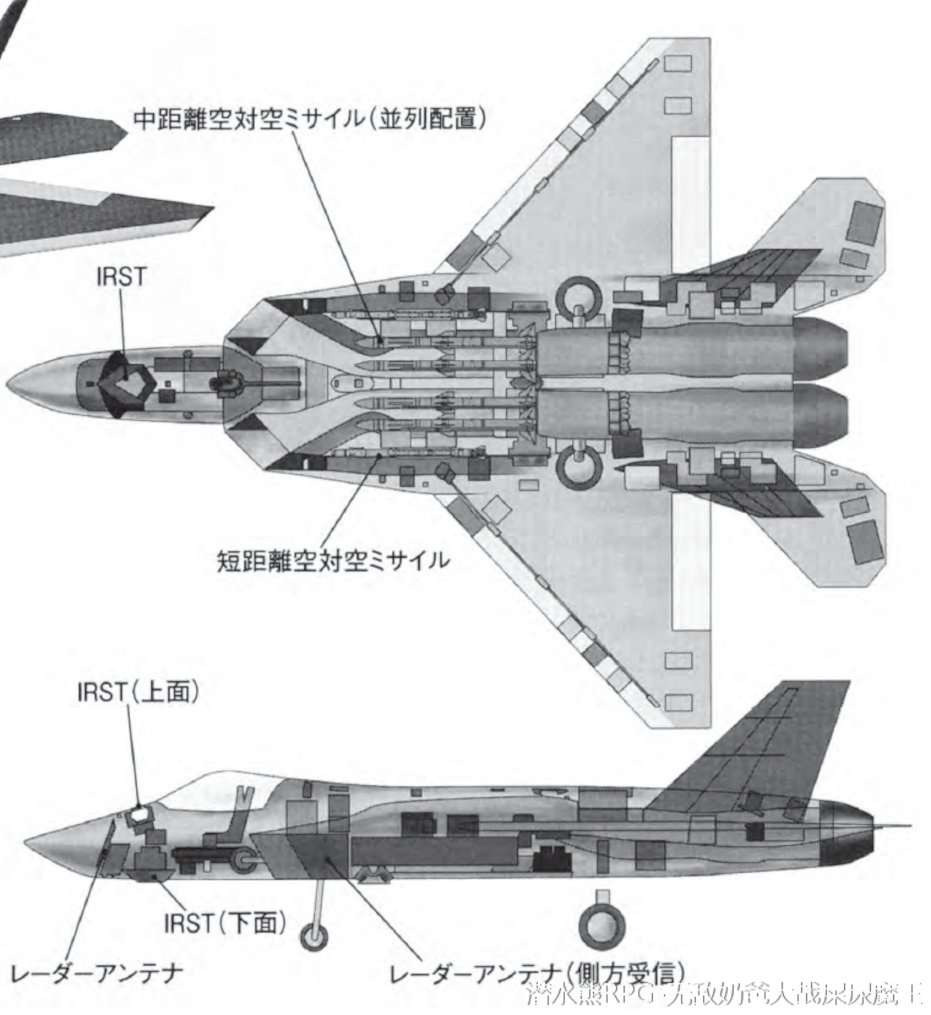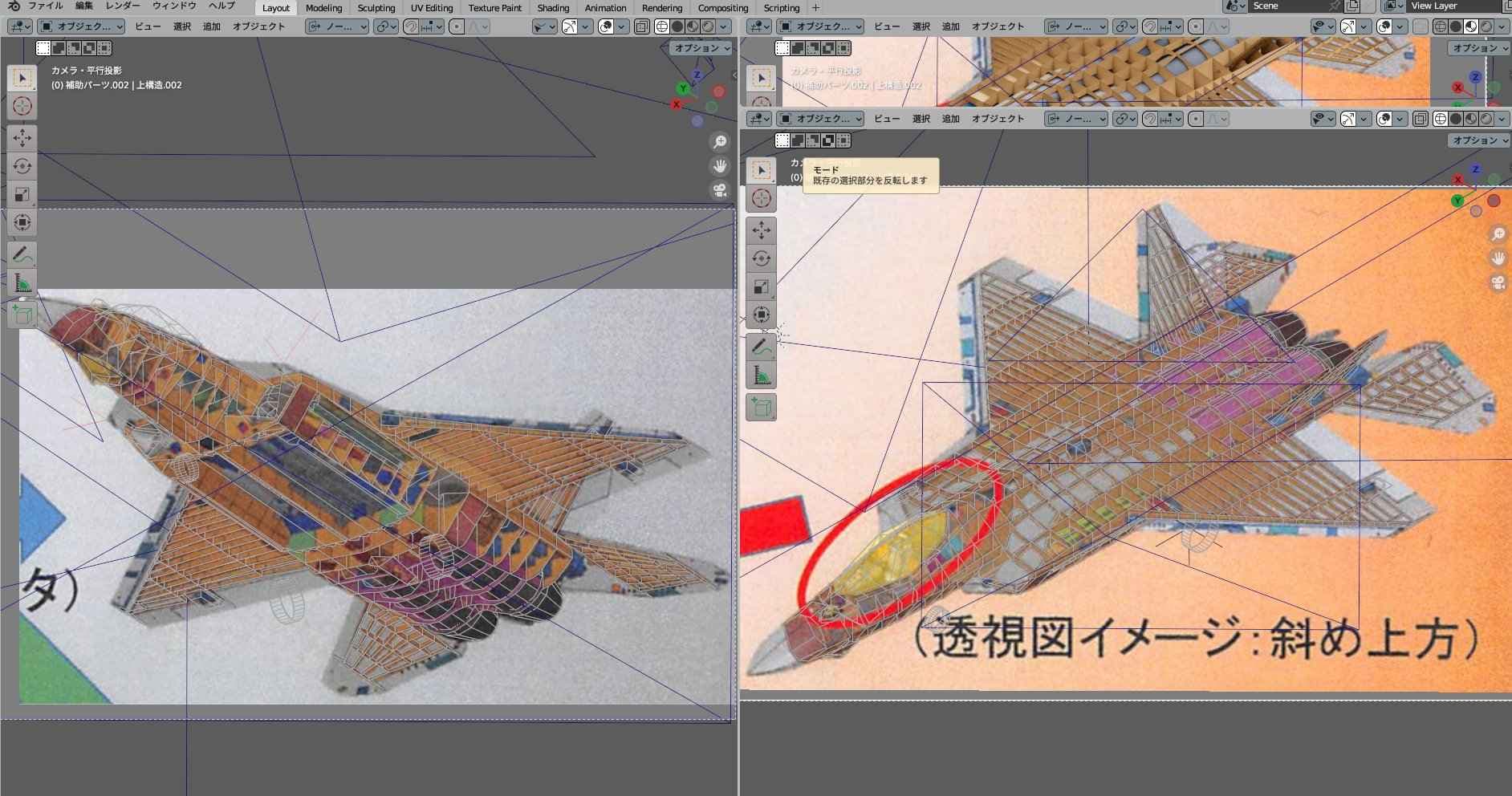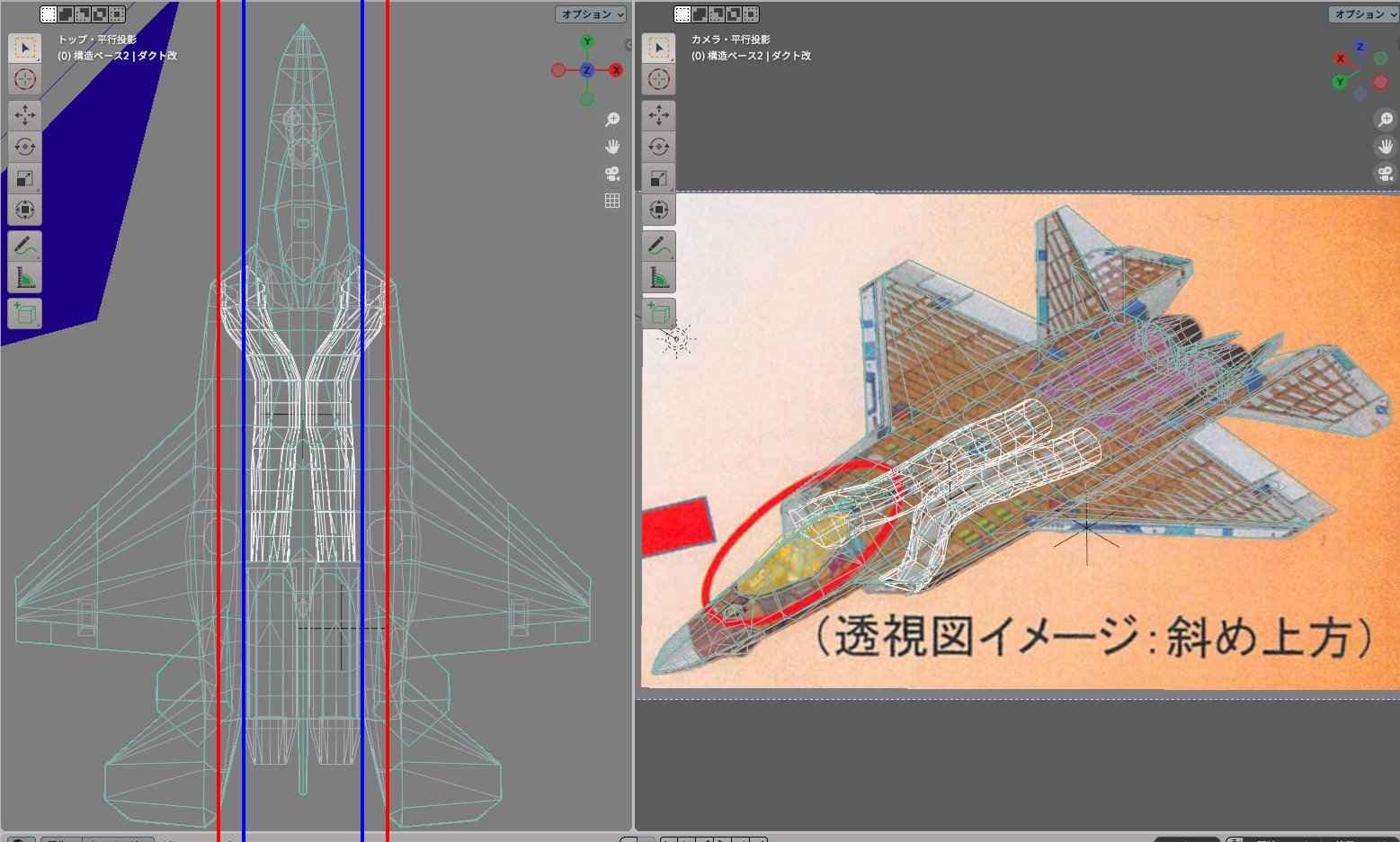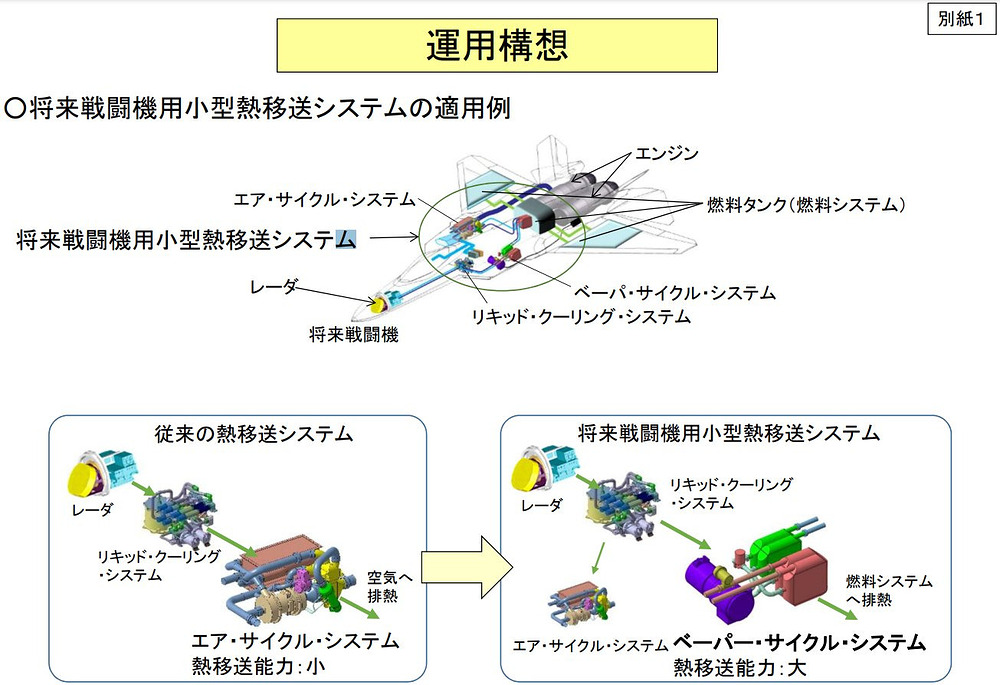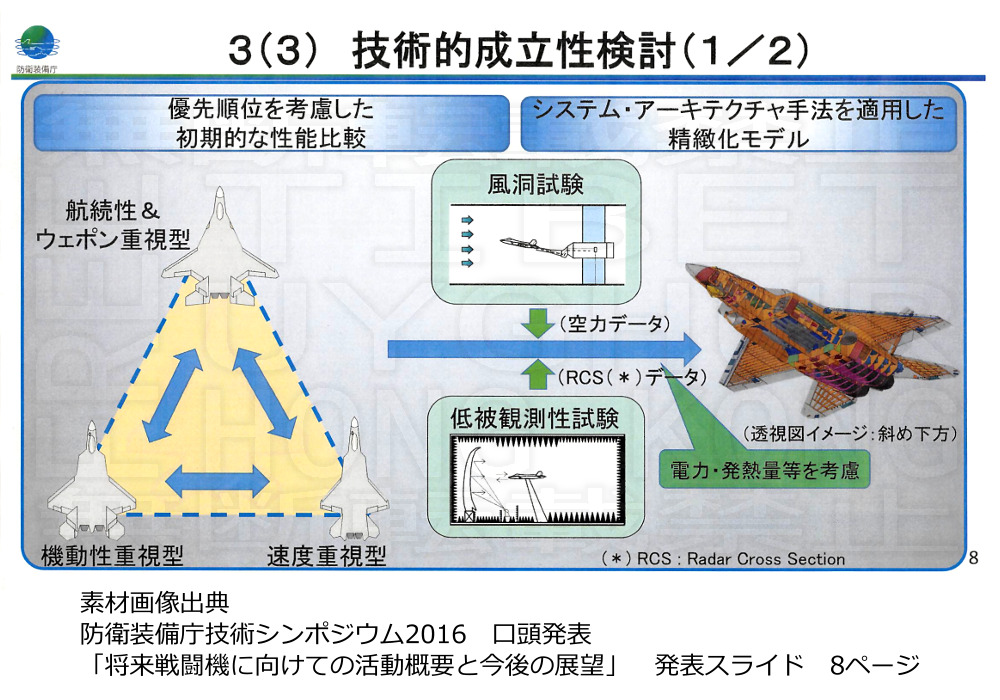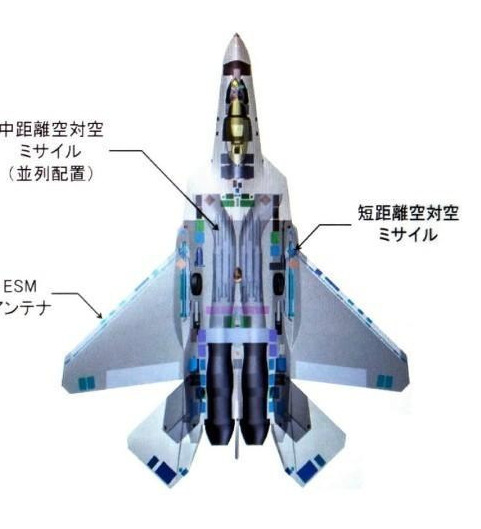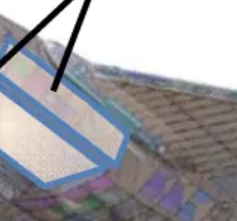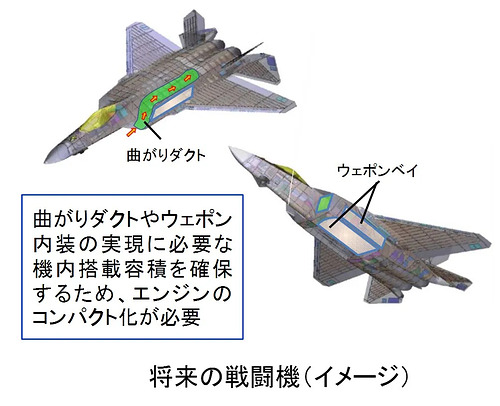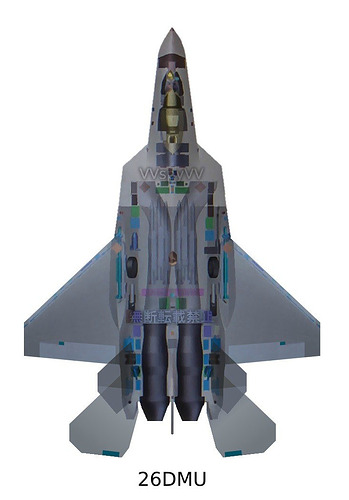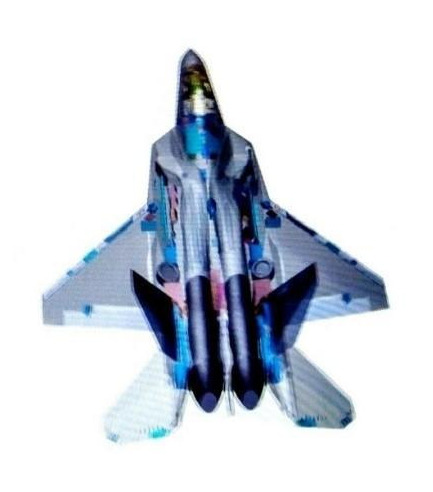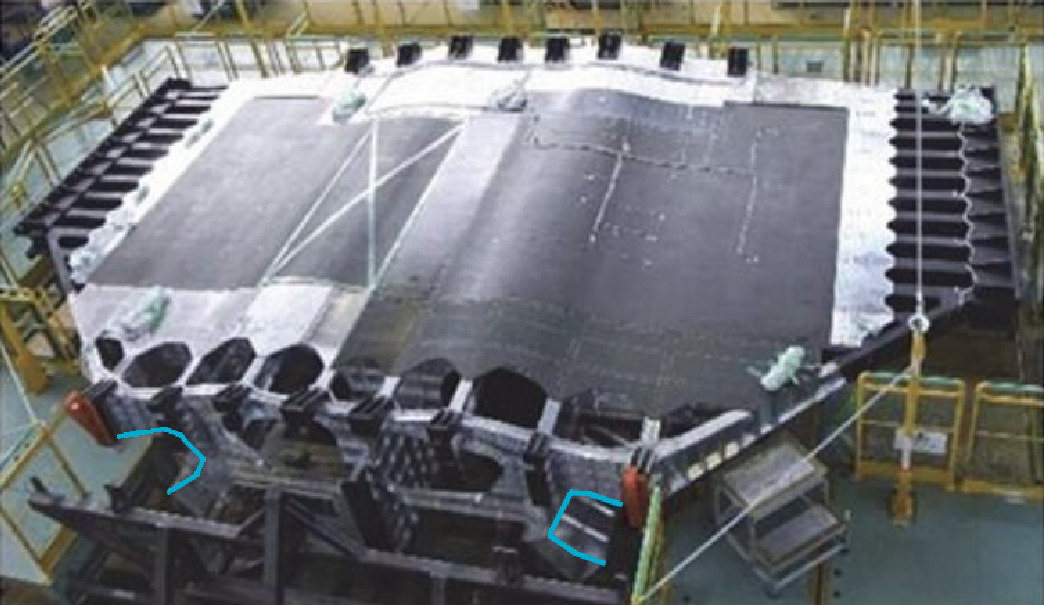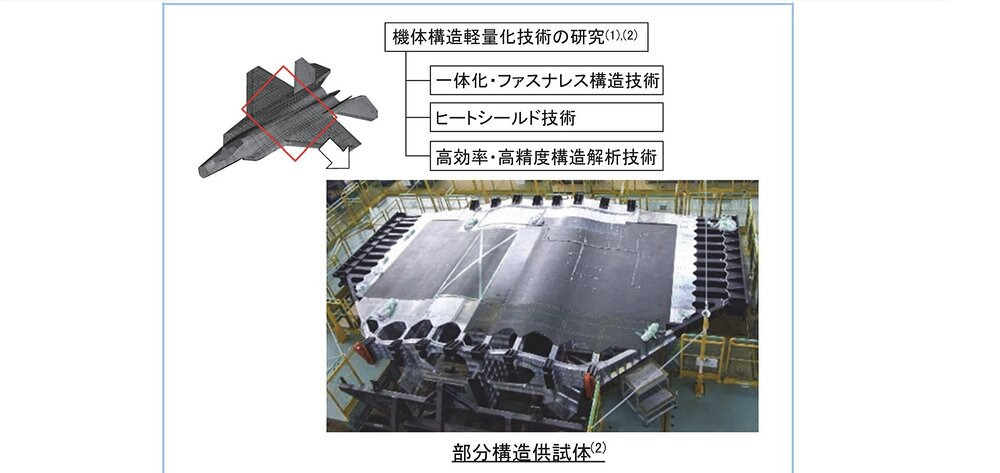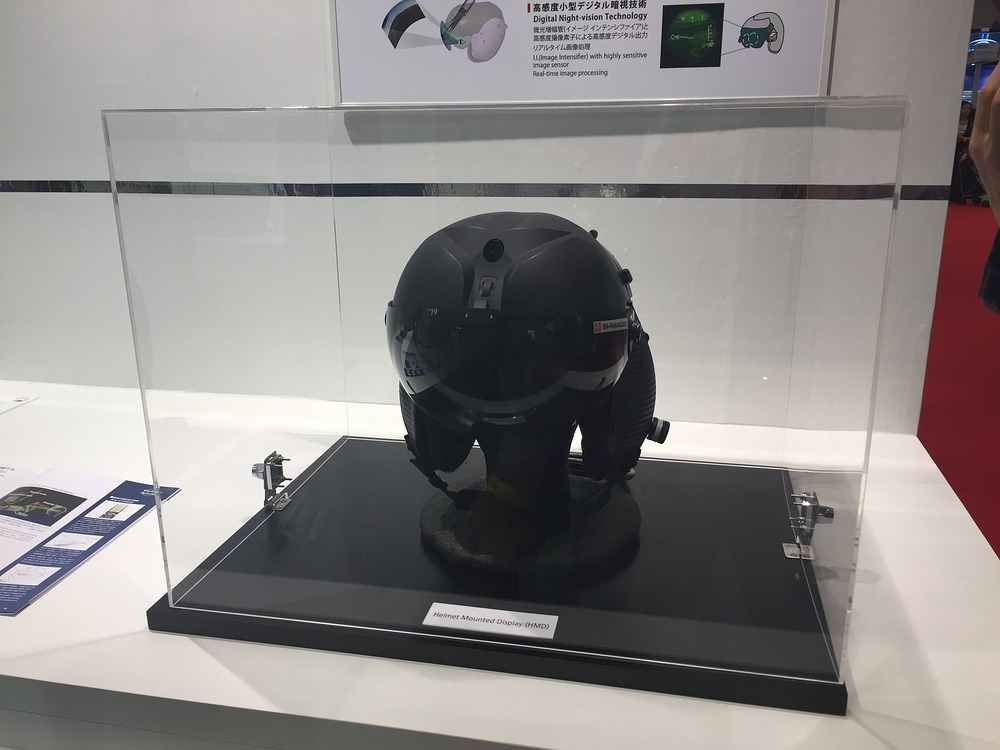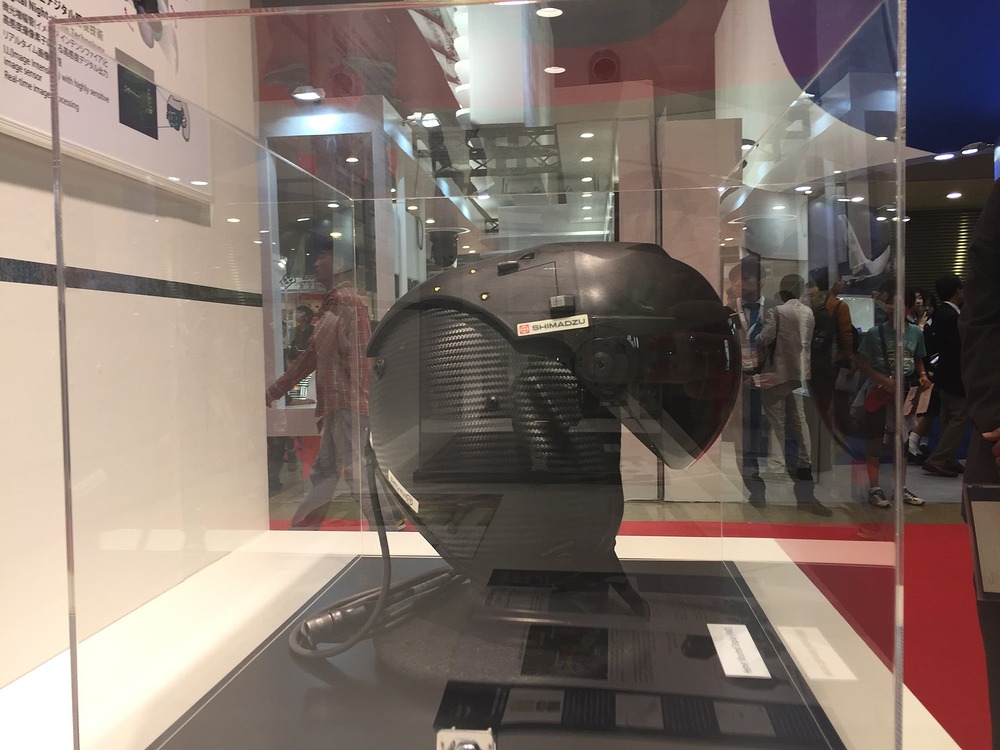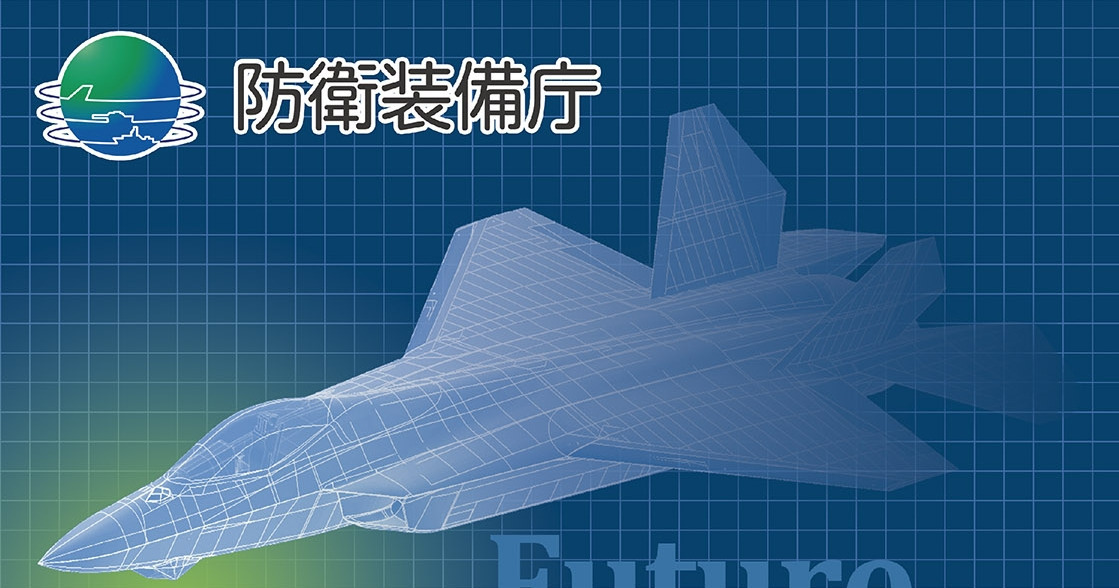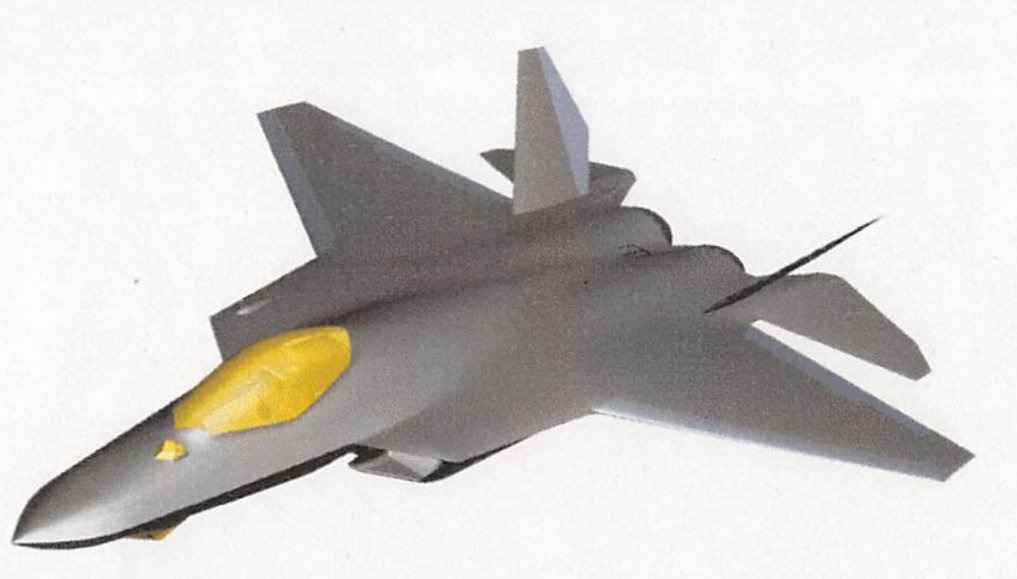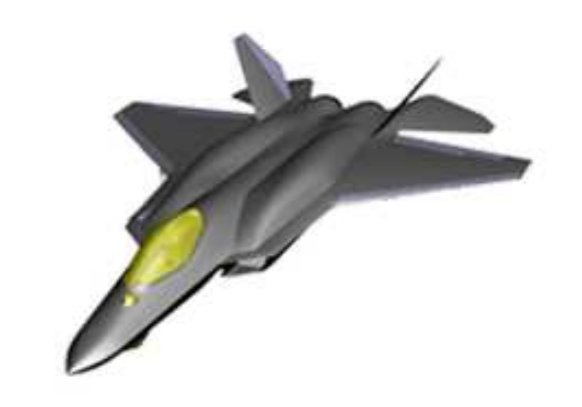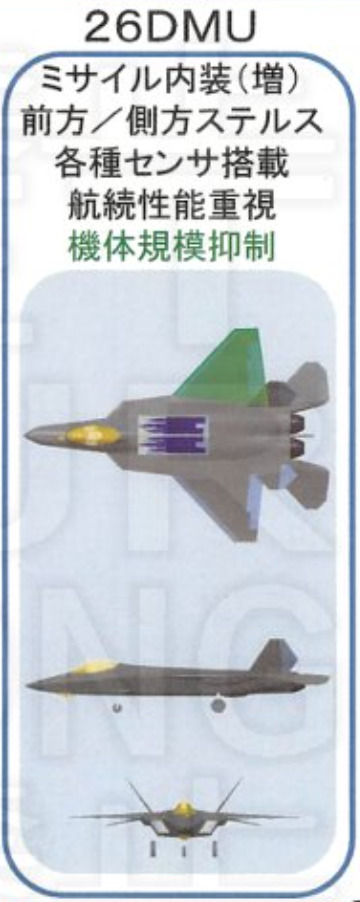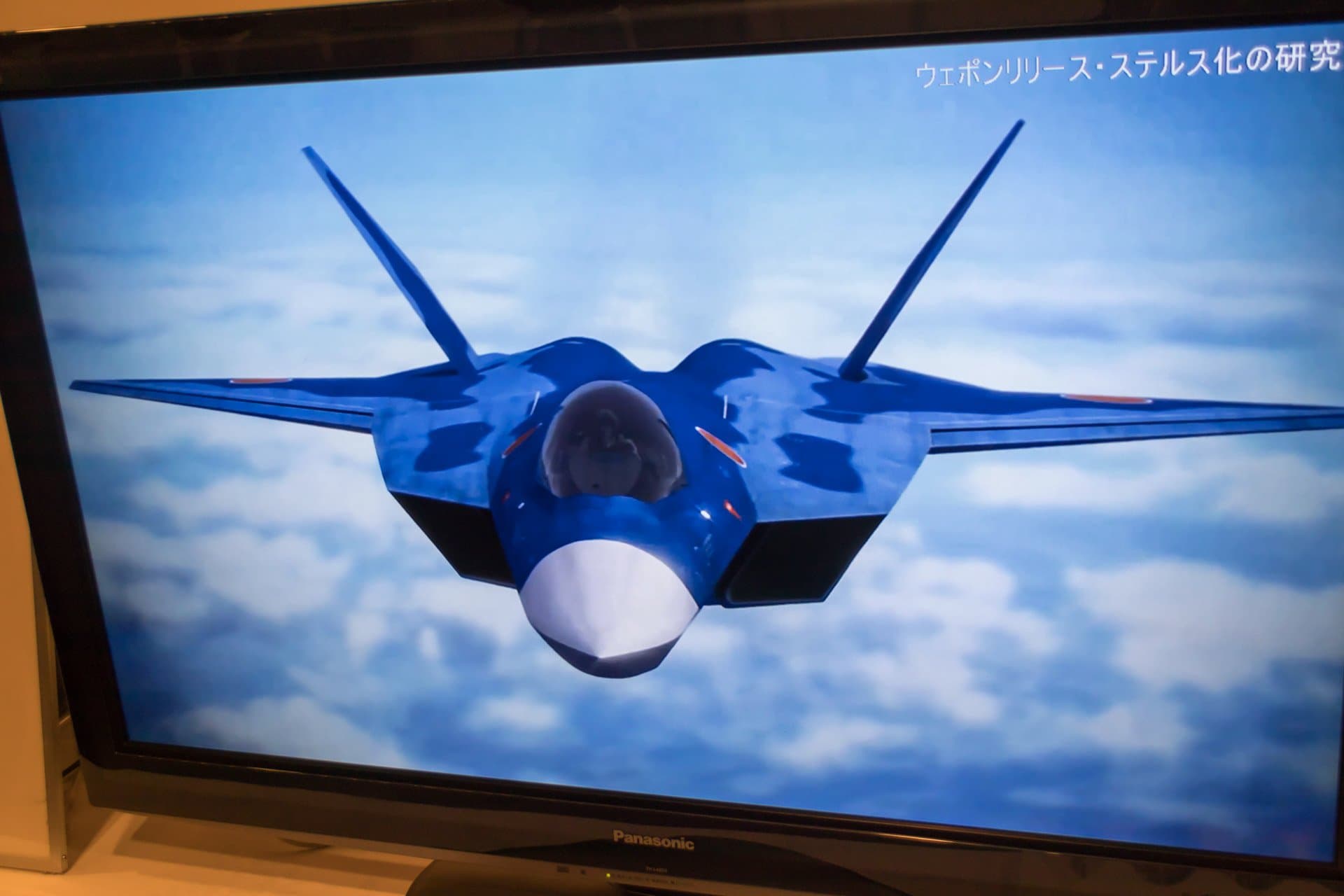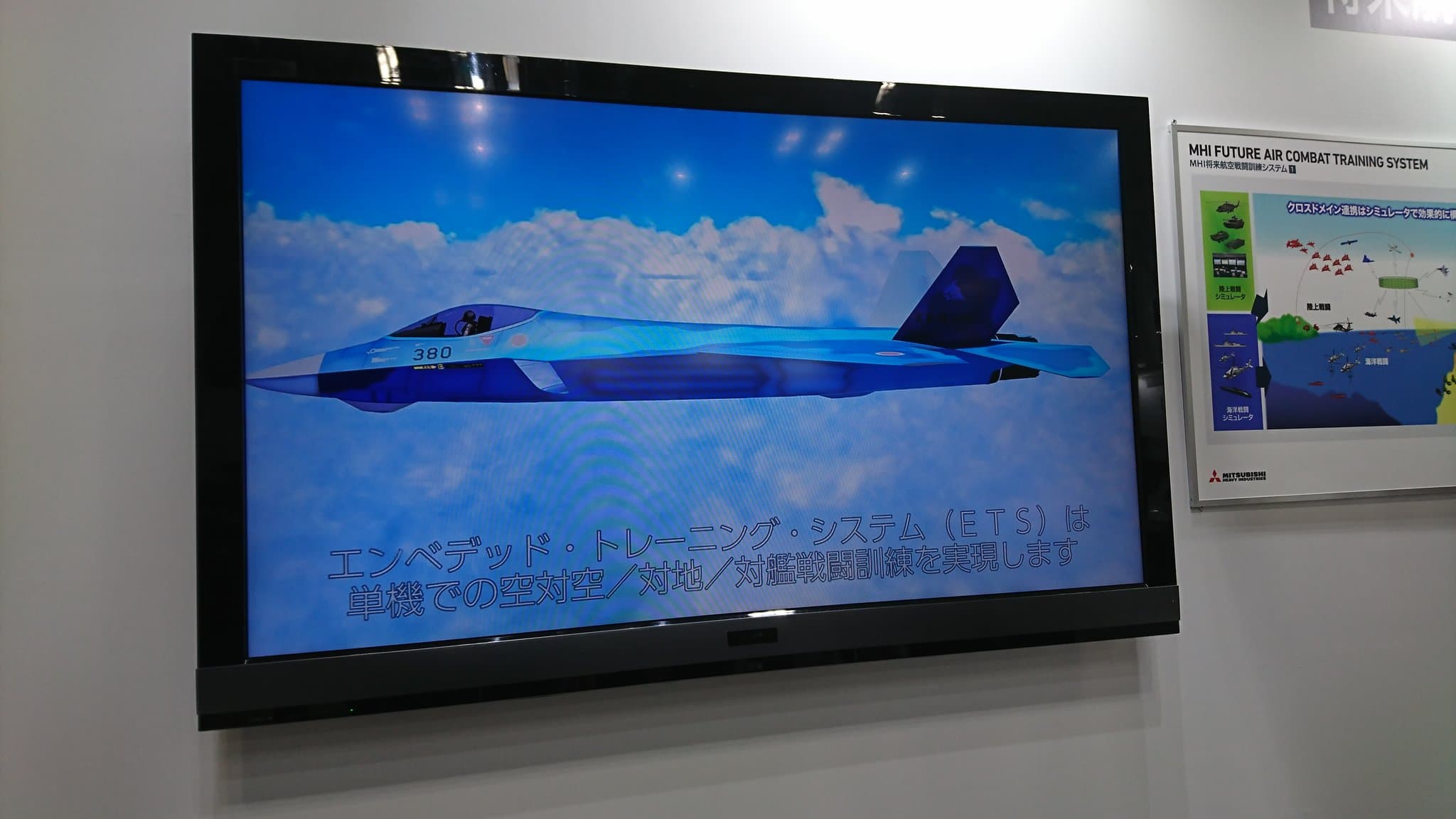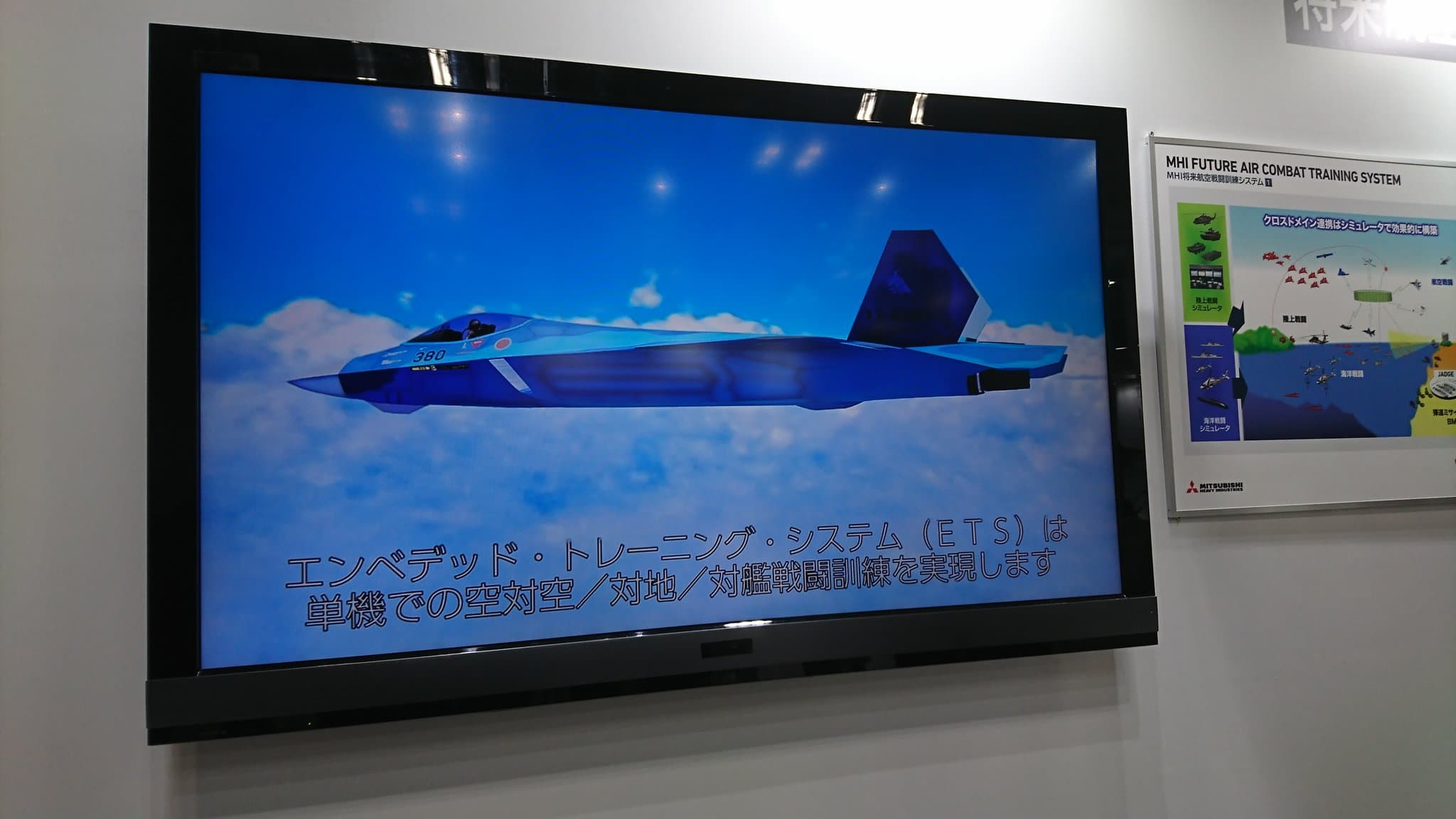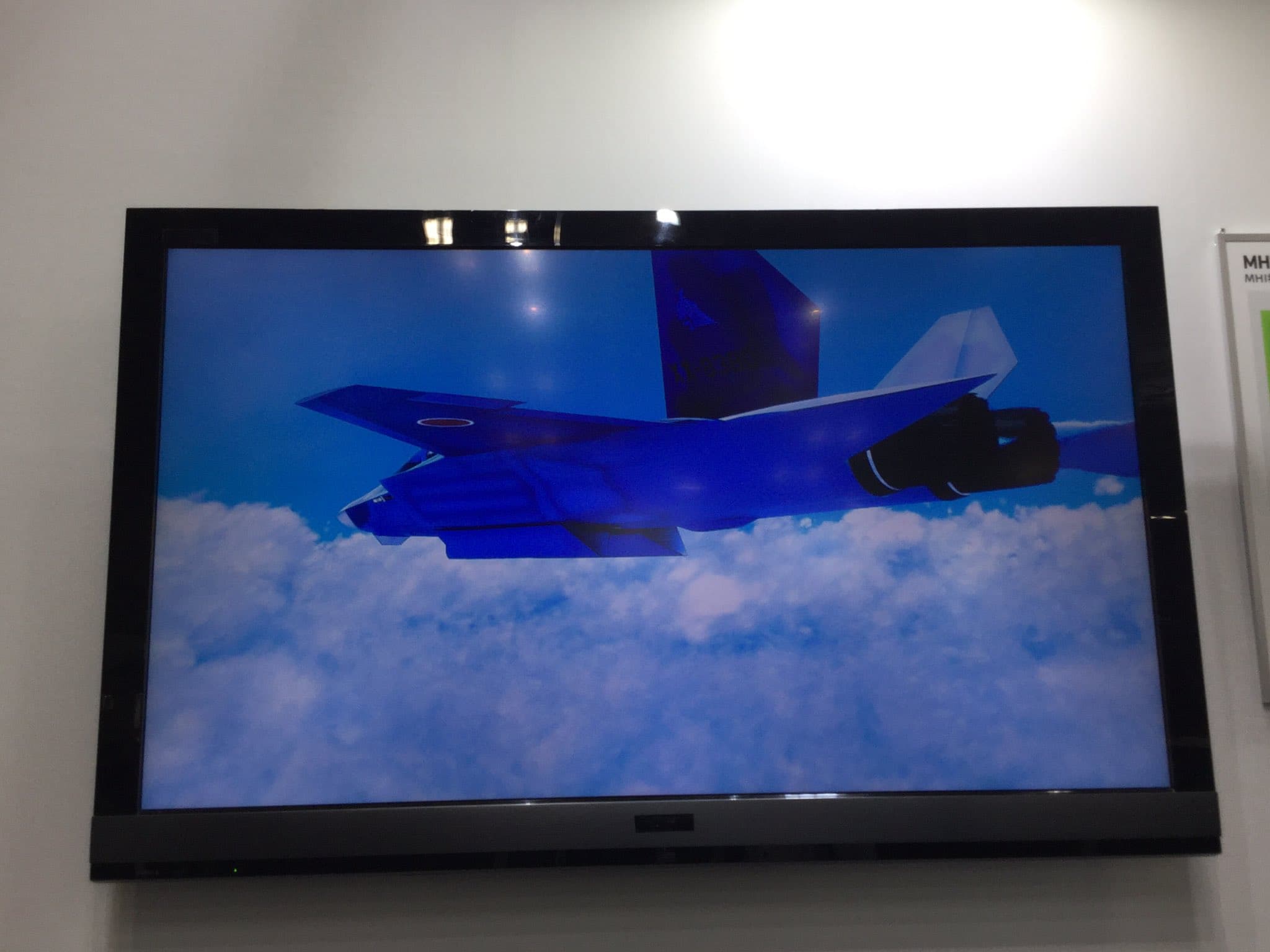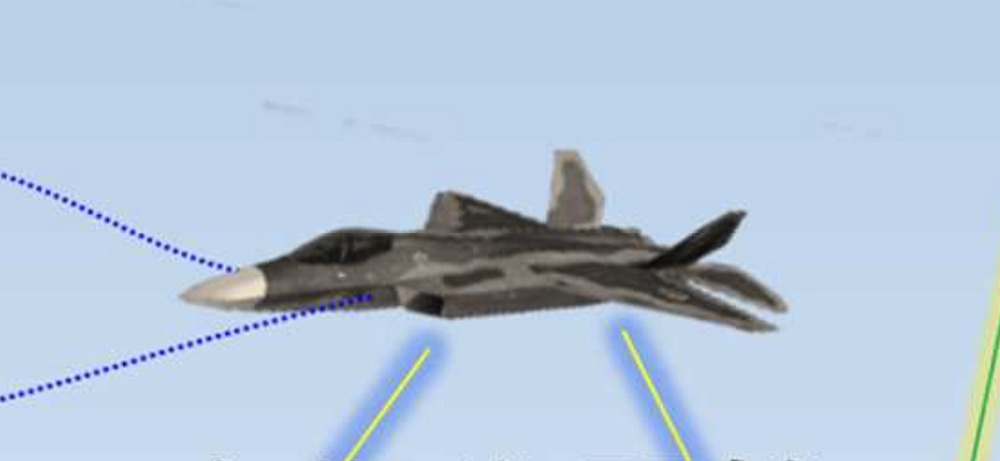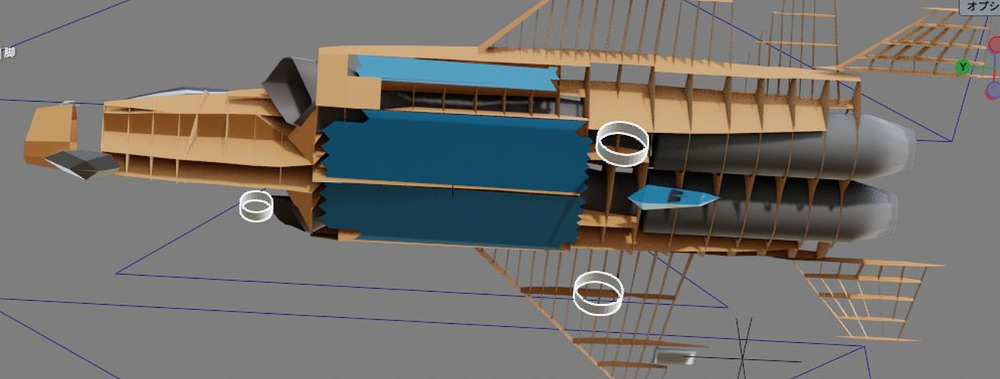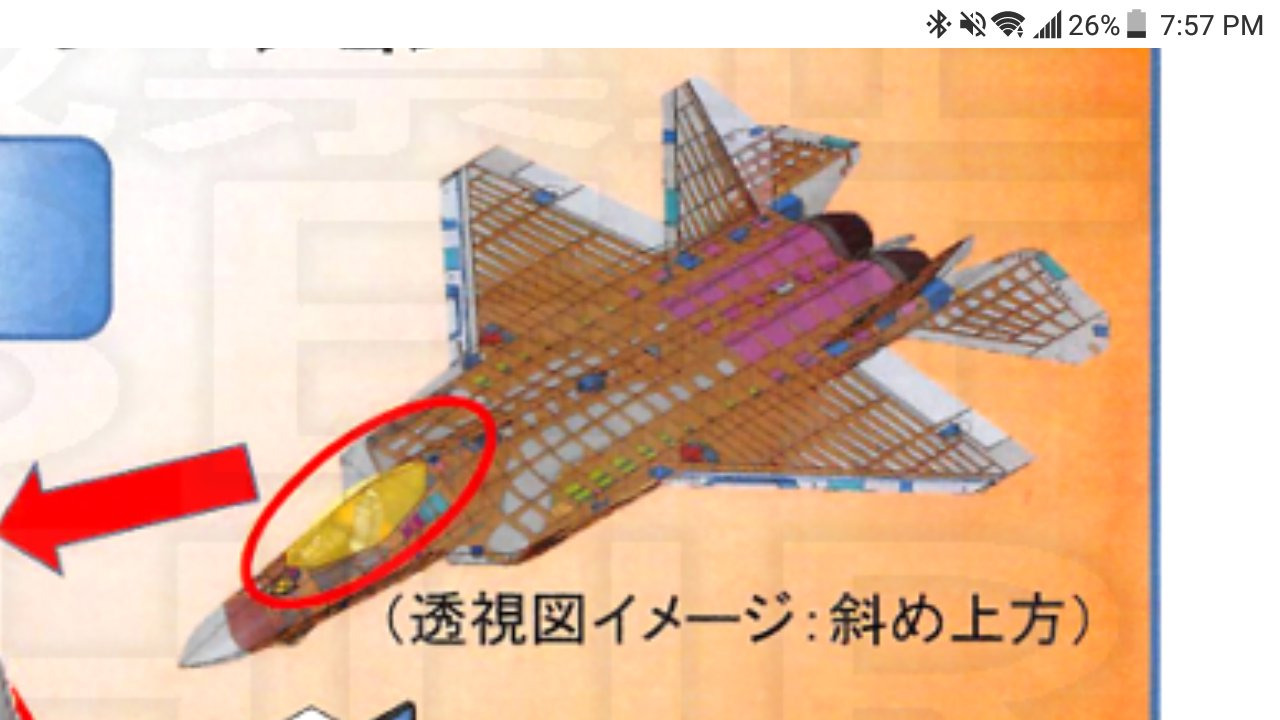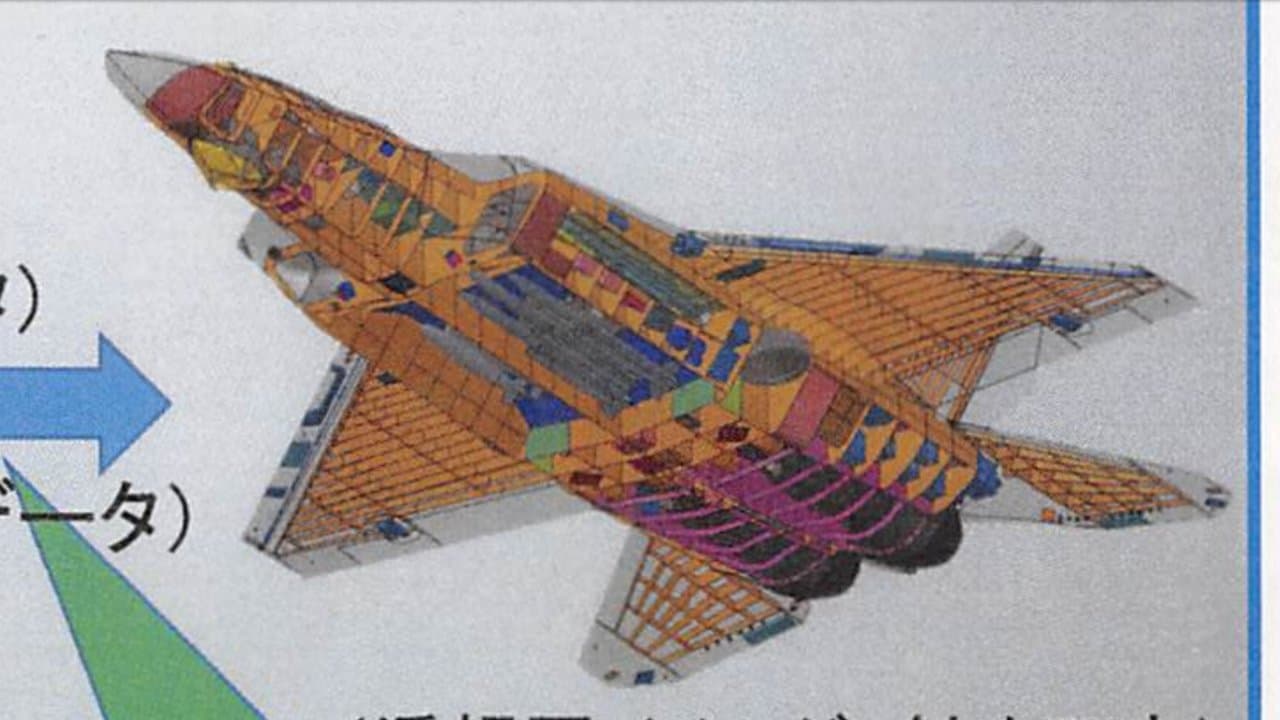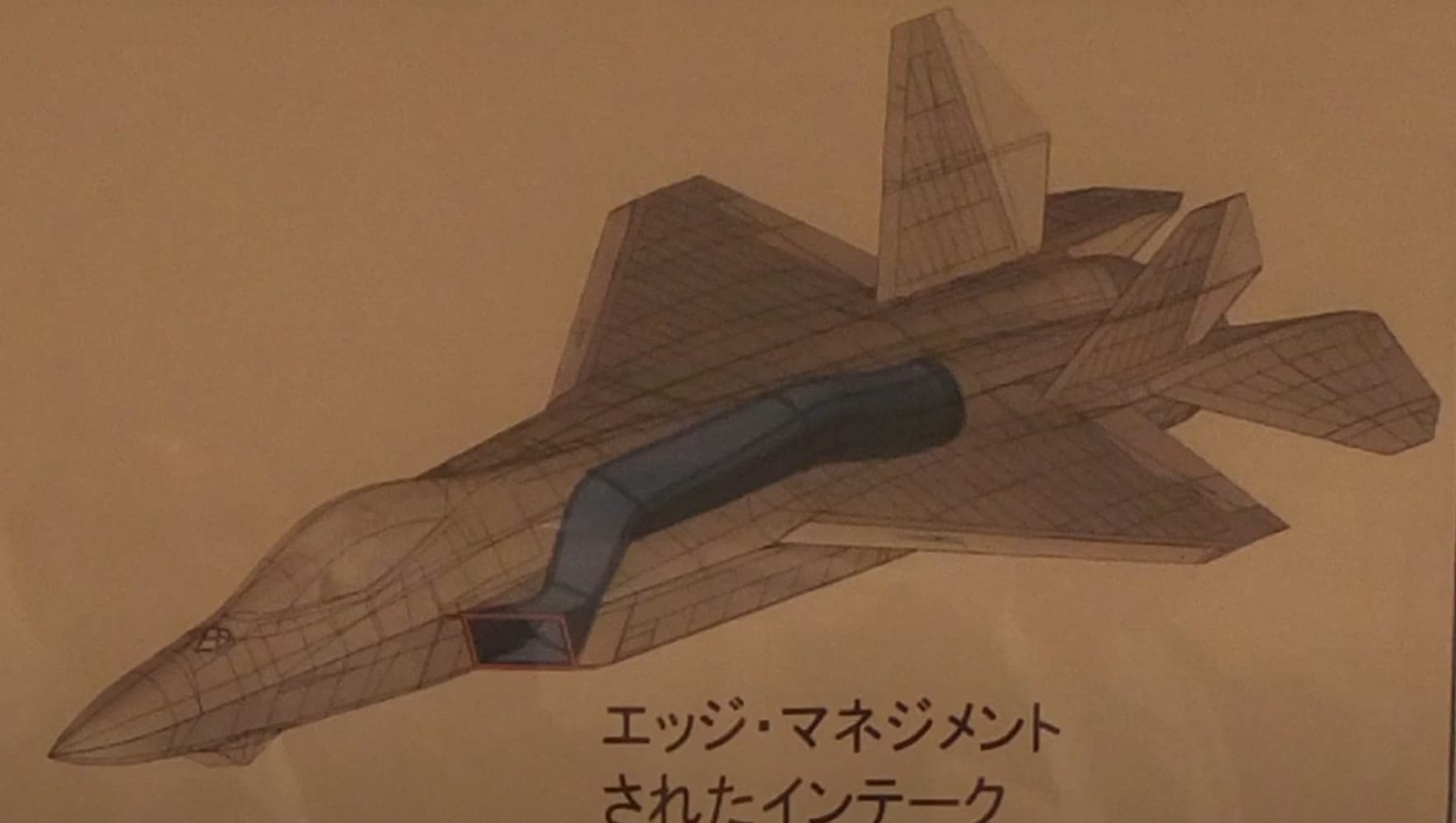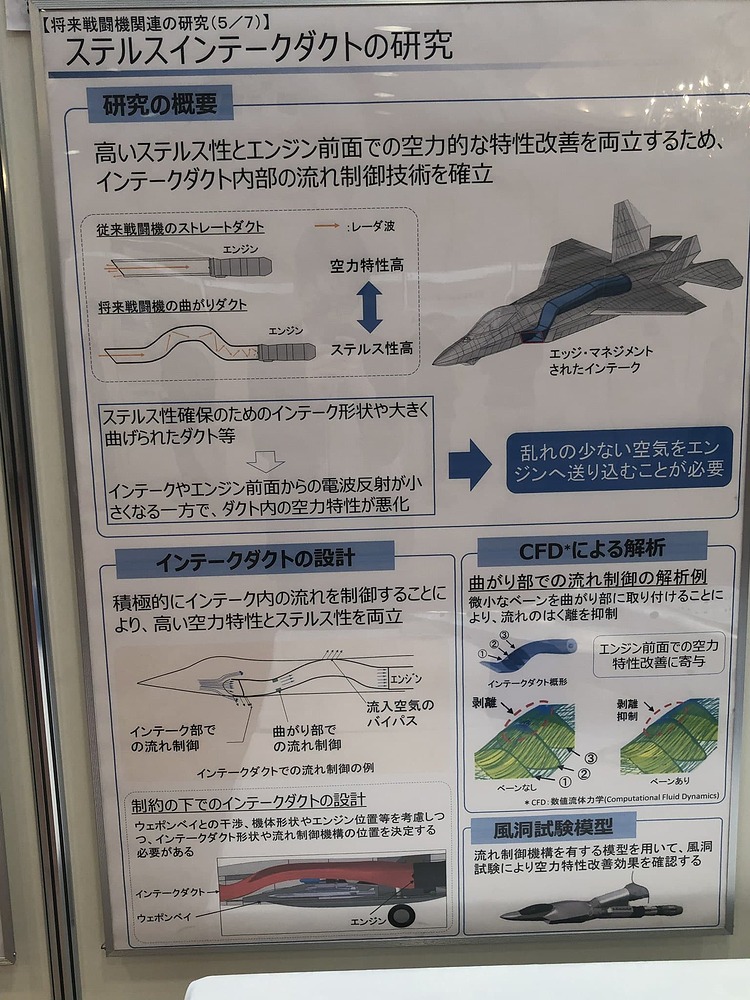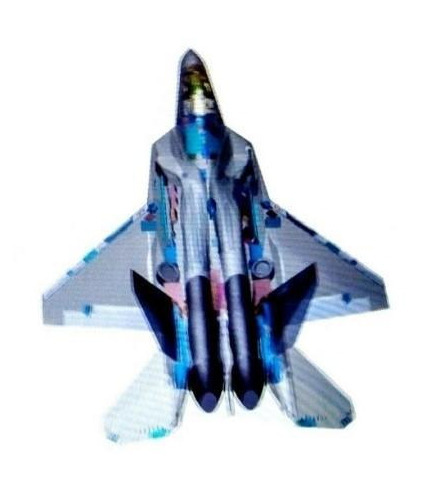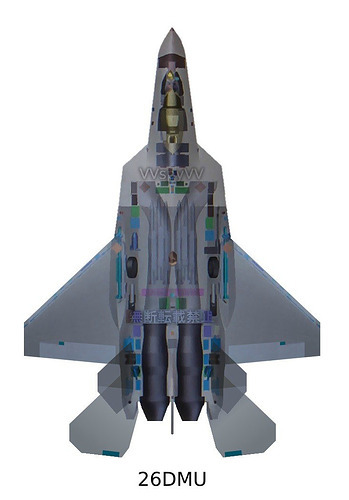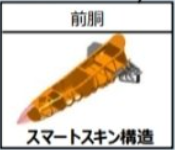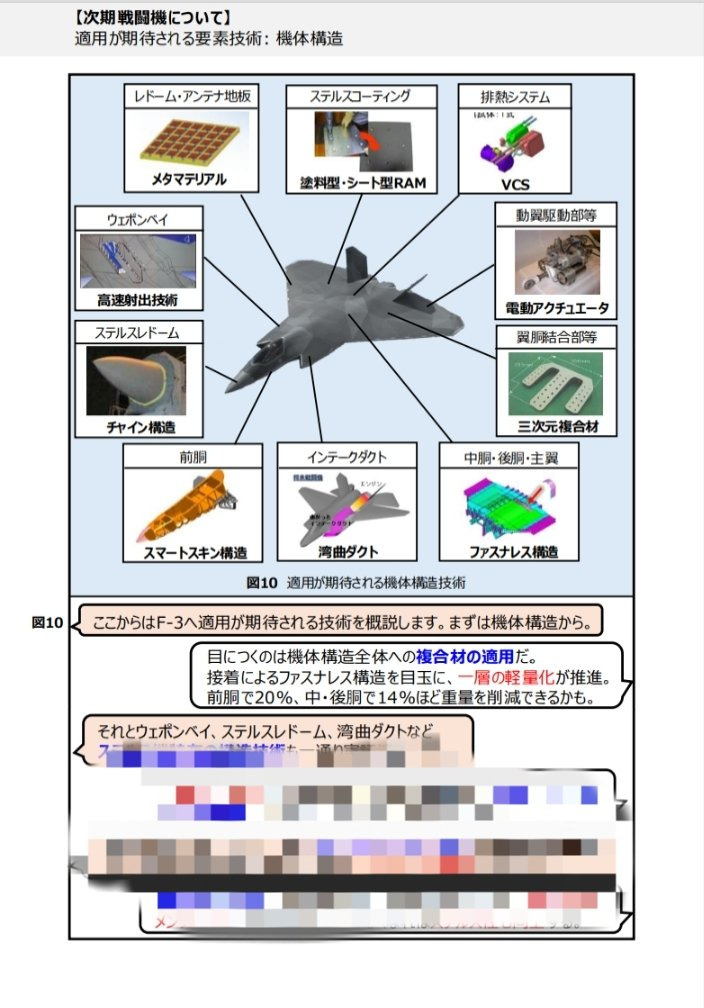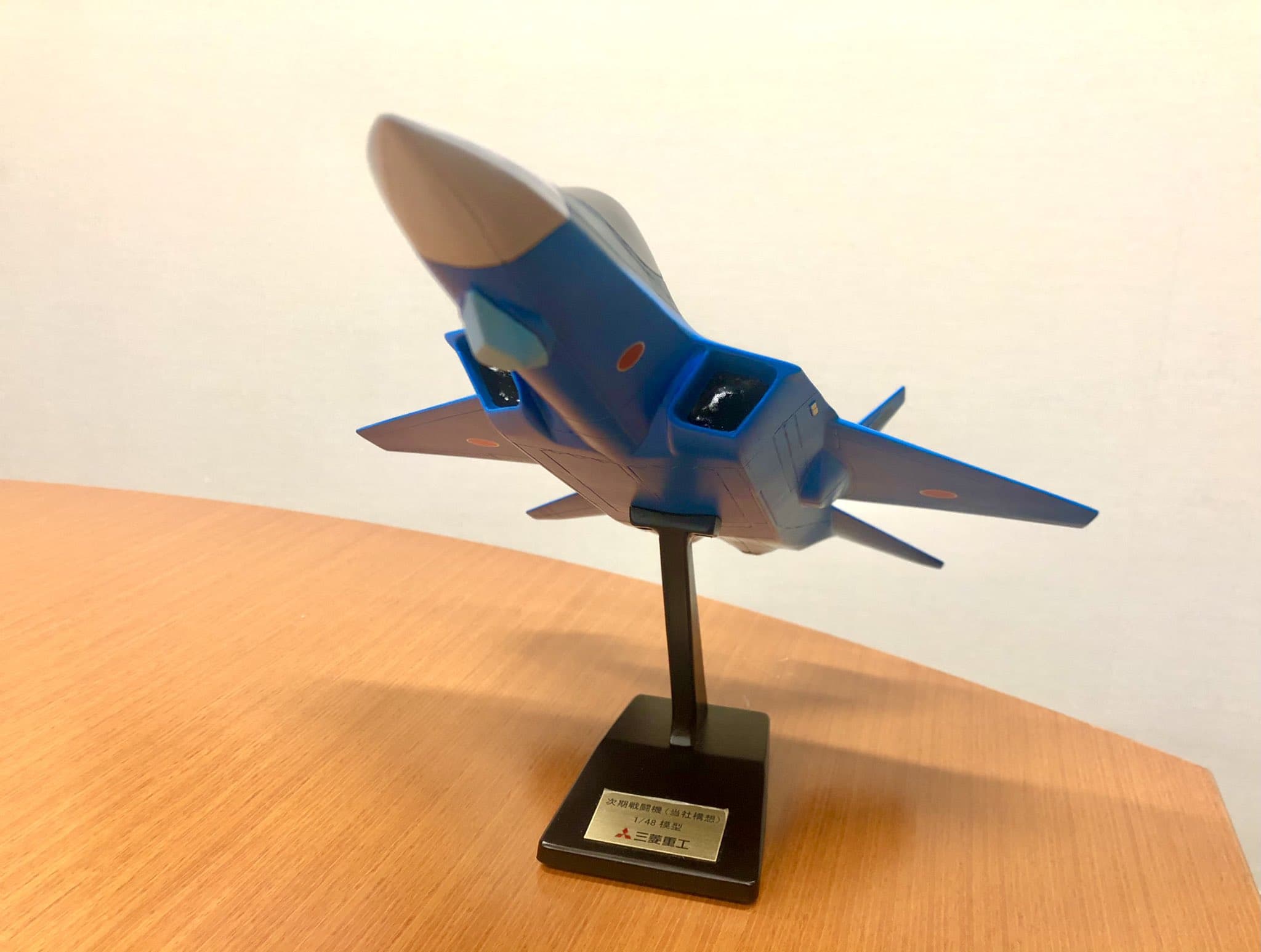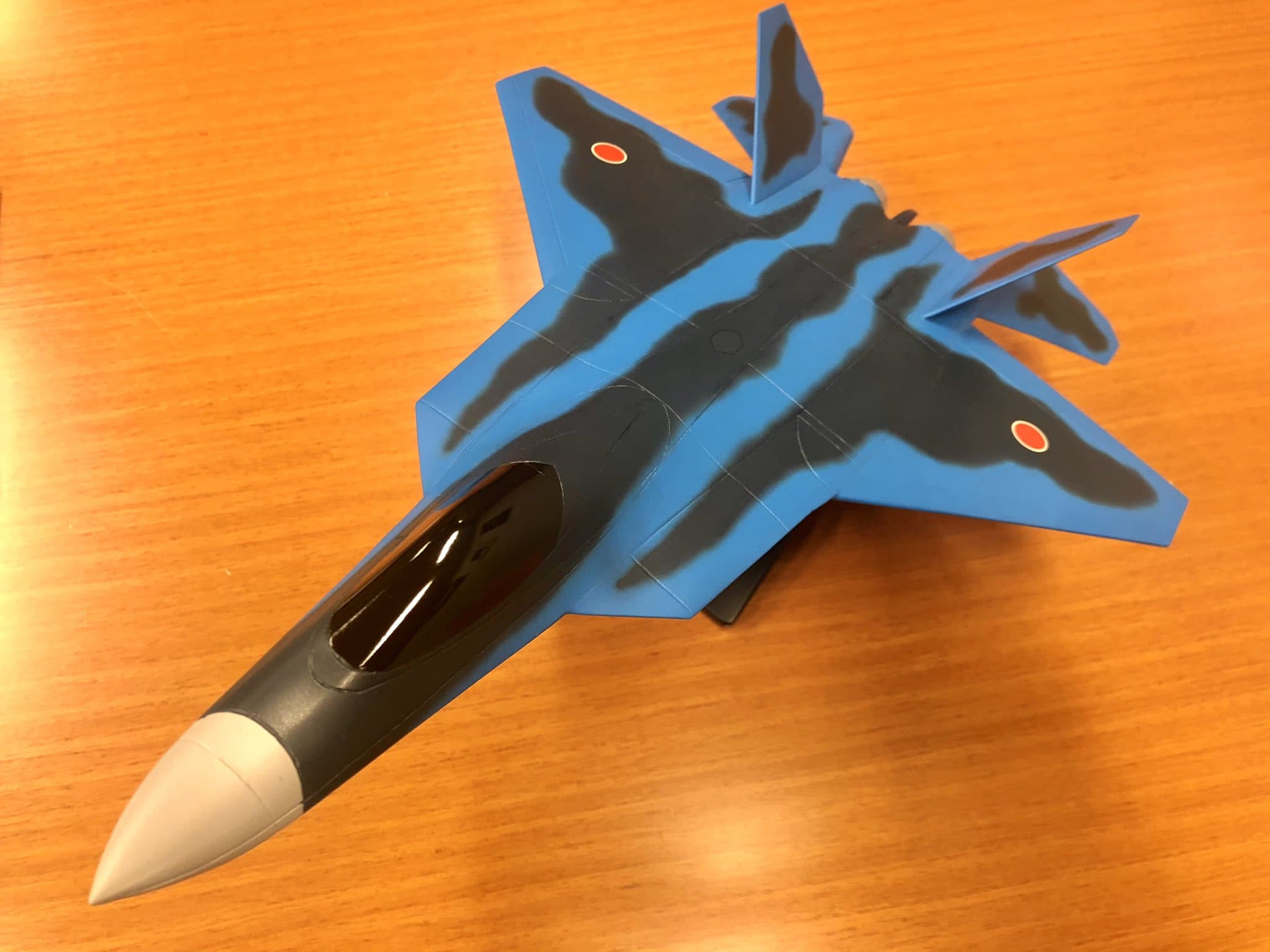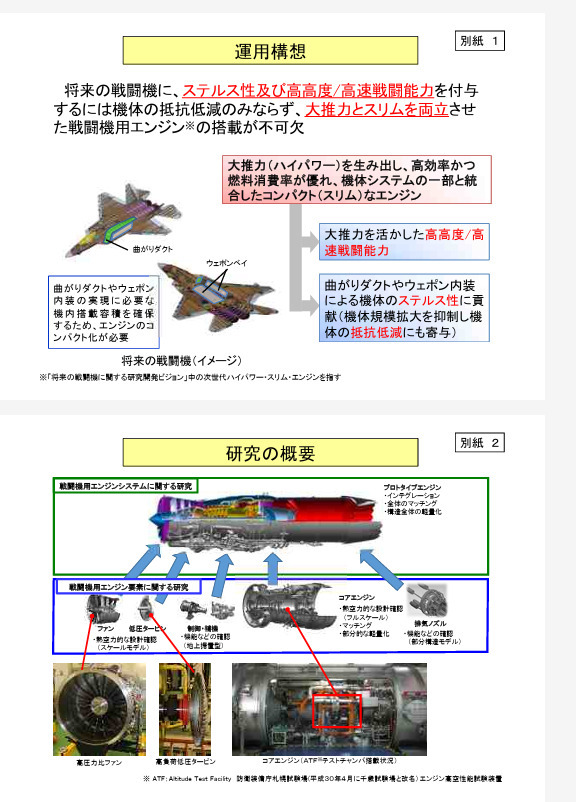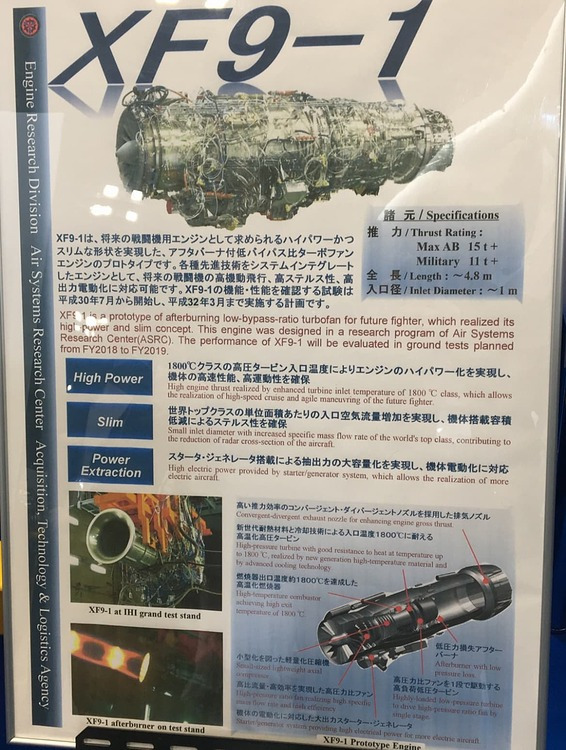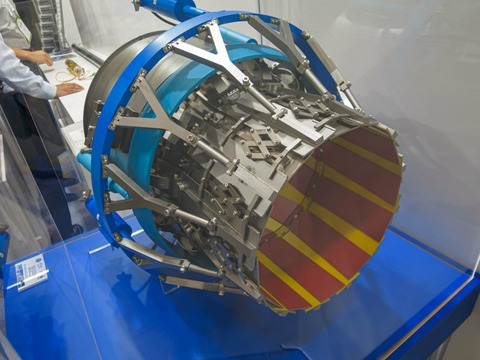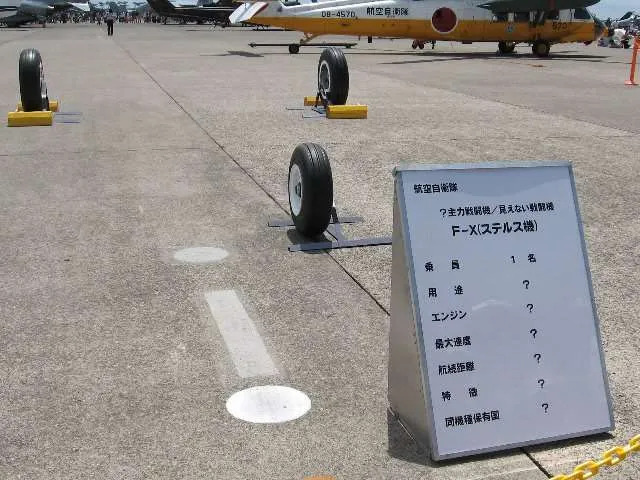Firstly, no, this is not a paper vehicle, several components including RAM, the engine, fuselage components, and potentially a radar were all constructed and tested. This firmly places it as an “Unfinished Prototype”, and valid to be added to the game as such. If you’re unsure about it and don’t wanna read it’s history, just look at it as an early prototype design for the F-3, or an armed further development of the shinshin, as it’s somewhere between those two things.
History:
Spoiler
The Mitsubishi 26DMU (Digital Mock Up), is the 26th DMU project made by Japan, being in a family beginning with the 23DMU and the X-2 Shinshin. While it’s name may lead you to think it’s an entirely paper aircraft, that is actually not strictly speaking the case. It was directly tied to the ATD-X (X-2) Shinshin, being spawned from the same project. Despite it’s name, the DMU series are not strictly digital designs. Physical components are produced to improve the accuracy of the simulation. And in cases such as the F-X programs, it is directly used for development of actual aircraft, even the F-2 was prototypes via DMU at a point. Further, many components to be used by the program were physically constructed.
The DMU series started in the mid 90s, as a way for Japan to explore simulations of potential future fighter aircraft, without the need for physical production of each design. With each DMU designation representing a year of progress. The first few DMU designs, starting with 1DMU, were for the development of the F-2. However this would not last long, starting in 1996, with the research study “Research and Prototype of Stealth and High Maneuverability Aircraft Simulator”, the purpose of the DMU shifted to studying proper next generation designs. This particular study would run all the way until 2001, and mark the cornerstone of the future of the DMU series, leading up into the 23DMU.
However, this, strictly speaking, is not the first study in Japan’s long path towards the development of a domestic stealth capabilities. That would be “Research and Prototype of Major Components of Future Aircraft”, which ran from 1991 to 1993. This study was, as with other JMOD aviation projects at the time, tied directly to the F-2. As part of the technological exchange between the US and Japan, both countries wanted to make the most advanced fighter possible. While the US did receive Japan’s AESA research, which helped to improve their radar systems. The deal was very one sided, and Japan did not receive most of the information they wanted, mainly around electronic systems and stealth. As such, they took it upon themselves to domestically start developing these areas, in the aforementioned study.
In 1997, along with it’s first flight, the US banned the export of the F-22 Raptor. As this essentially killed any remaining hopes of joint collaboration on stealth technology with the United States, this marked the first point wherein Japan seriously started to look into a domestic 5th gen. This point also ended the US’s collaboration with the DMU program, which up until this point, had been receiving significant support from the US. Initially they had helped drastically with the program, supplying much of the hardware and information that allowed for the aerodynamic modeling the program used.
With the US largely out of the picture, the earliest start to what would be recognizable as ATD-X, and in relation the 23-26DMU series, would have been with “Research and Prototype of High Maneuverability Flight Control System”. This study ran from 2000, up until 2007, and was directly used as the base for the Shinshin, which the late stages of this project directly lead into, with scale models of what would become the design being produced in the later stages of it.
Following this study, and leading into the 5th F-X program (in which the F-35 ended up being selected, out of options including the F-2 “Super Kai”, Eurofighter Typhoon, and the F-15FX), there was a full, proper look into the development of a domestic alternative. While this project was quickly deemed unviable to be the selected candidate from the 5th F-X, it did lead to the creation of it’s own project, which would also be dubbed F-X, or unofficially F-3, (Japan uses F-X/FS-X to denote any fighter development and acquisition program).
This study contained many, many parts. A key bases of it being the I^3, which was the conceptual outline for the development of a future fighter aircraft, including key features such as networked electronic warfare. However the I^3 was not the direct basis for the this design, with instead wind tunnel testing of several models being done. With the 23-26DMU series specifically being derived from the “C” type model.
Now, the DMU series was not intended as something to actually exist IRL, atleast not directly in a full production form. They were simply one part of the overall project towards the research of the F-X. However, they did serve as the bases for the production of physical components used for prototyping. With several components, such as weapons bays and fuselage structural components being created based on the model. These were used for testing for confirmation of the design.
While the study ran for a few years, up until 2017, with research being supplemented with RCS and flight analysis of the X-2 Shinshin. The project did eventually end. Firstly due to shifting concerns, past that of a 5th generation aircraft to that of a 6th generation. And then later more fully due to budgetary concerns, with the development effectively being on hiatus. Later, the research from the project was used as Japan’s buy in to GCAP.
So, that leaves

Scale Models:
Produced Components:
Spoiler
As stated in the introduction, multiple components were produced for the project, the known examples being: 2 fuselage components, XF9-1 engines, RAM, 1 primary weapons bay, and two potential radars.
Fuselage pieces (25 & 26DMU):
Weapons bay (25 & 26DMU):
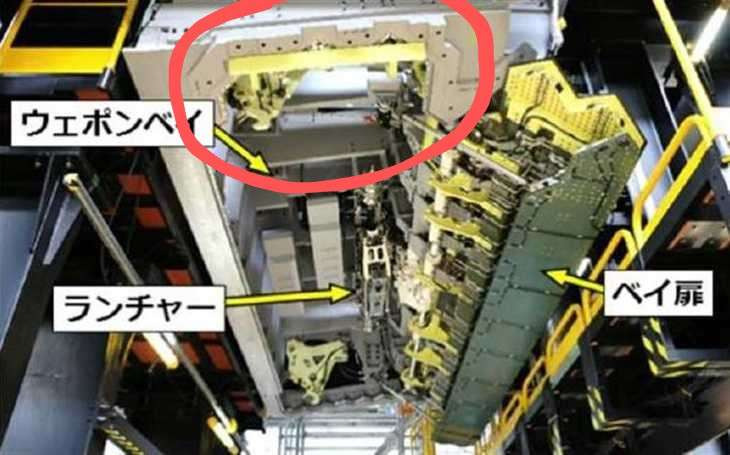

RAM:
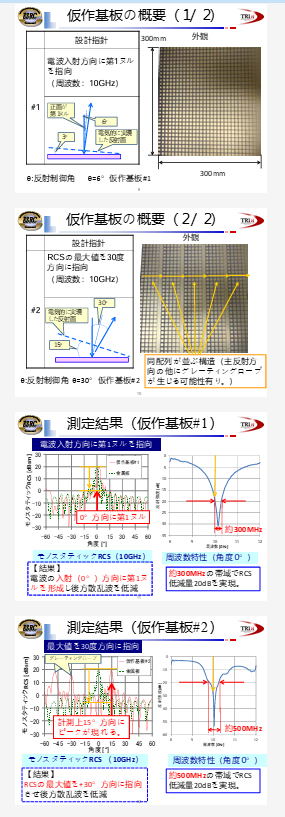
Electric Actuators:
Engine:
Spoiler
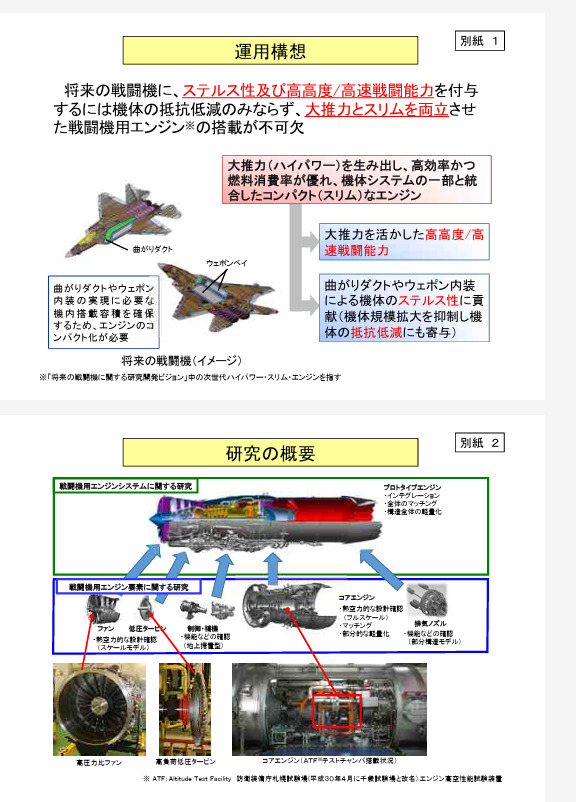
The engines for the 23-26DMU are the IHI XF9 / XF9-1, prototype high thrust engines developed specifically for the program. The XF9-1 is a twin-spool axial-flow afterburning turbofan, featuring a 3 stage fan and 6 stage compressor. It’s based on the XF5, which was used to power the X-2, however it’s much larger. Like, the XF5, it is claimed to have excellent throttle response. (The XF5 can spool from idle to max in under 5 seconds). While originally planed to produce 196kn of static thrust, in practice the engine only has “at least” 147kn in full AB, with 107 in non-AB. However this was from before the development of the engine ended, so it is very well possible it ended much nearer to the power target. The engine has a very high core temperature, of 1,800 Celsius, and also produces much more power then other engines of its class. Each engine produces 180kw from it’s start motor, much more then an F-35’s 160kw. This was likely in expectation of extremely power intensive networked electronic warfare systems.
Additionally, the XF9-1 is fitted with the XVN3-1 3d TVC nozzle, as seen in several renders of the DMU series. This nozzle has up to 20 degrees of gimbal in any direction,.
Radar:
Spoiler
There are two different radars which could, in theory, be given to it. Firstly and most obviously, is the radar which was actually outlined for it. While conveniently, we do actually have a considerable amount of performance information about it as outline. It has some issues, mainly that there’s no images of it, or anything past an outline for a prototype, which may or may not have ever been built, as it’s only referenced in a document for a prototype radome.
The first, is the radar which appeared to have been planned for it, which has characteristics detailed below. As we can see, it has a detection range of roughly 46 kilometers against a target 0.01m^2, with an atmospheric attenuation of 0.01dB/km. This potentially gives it well over 250km of detection range against a none stealth target. Additionally it has exceptional maximum detection area, with a mechanical steering of +/-60 degrees azimuth, and -0/+30 degrees elevation. With a normal AESA beam steering of +/-60 degrees, this gives us a total of +/-120 degrees azimuth, and -60/+90 degrees elevation. Additionally it has the ability to engage up to 4 targets at a time.
For either primary radar, however, there is another, secondary set of radars, located in the wings. These are fixed, with a +/-60 degree beam steering angle. However nothing else is known about them, as they were not a finished component.
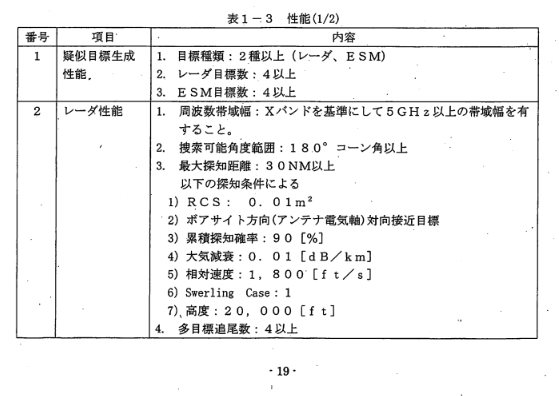

The next would be the “High Power” AESA tested by F-2 63-8501 in 2018-2019. This one at least we know to have existed, and that it’s based on the J/APG-2, but performance figures are unknown. While this is part of F-X overall, it was not directly tied to the DMU series as far as I can tell.
Avionics:
Spoiler
The DMU series has a few notable sensors, besides just a primary radar array. Firstly as i previously covered, it has side facing radars embeded in the leading edges of the wings. But those aren’t the only sensors in the wings. Additionally, the plane features multiple ESM antenna, which has atleast 4 modes of operation (pulse width, pulse repetition interval, frequency, and direction). It also works to provide targeting information, being combined with the radar for a combined fire control computer, it is capable of engaging up to 4 targets at a time. Any two systems on the DMU series can be active at a time, ECM, ESM, and the Radar search array.
Also, it has two IRST devices, one on top of the plane, and one below. Combined these give almost a complete 360 degree IR detection coverage. Additionally they also work for slaving weapons. Going off of the F-2 it was tested on, it appears to have both a full combined aperture approach, and a combined sensor TWS system.
A MAWS system was planned, although the specifics are not known. While it is likely it could’ve been radar based like Japan’s other MAWS systems, there is no visible unit for it on the renderings, so it may simply use the IRST system for it, as the IRST on the F-15J is capable of. Full defensive sensor fusion can also be assumed, given that japan tested it on both the F-15J IEWS, and possible on F-2s? (Citation needed on the F-2 testing).
For HMD, Shimadzu developed a multi-colour display HMD.
Stealth:
Spoiler
Following a “conventional” 5th generation design, the 26DMU has excellent radar reflective properties. A large part of this is due to the RAM developed for it, by using alternating patches of dielectric and metallic materials, the phase of incoming radio waves can effectively be shifted, disrupting the resulting wave front and reducing the reflected radar signature.

Additionally, As part of the F-X program, Japn developed a plasma radio wave antenna system, which works to drastically reduce the plane’s RCS by potentially up to an order of magnitude. It is unclear if this was intended for the DMU series, or if this was something added to the F-X after the DMU. However renders for it do use the 25DMU, and not the F-X design chosen after the DMU series, so it appears to be for them. This drastically reduces the plane’s radar cross section, particularly for lower frequency bands.
Additionally, a phase change cooling system was planned for cooling of the RAM. The reason for this is that RAM becomes less effective as it’s temperature raises, especially so with the checkerboard style RAM this uses, where the differing electrical resistances of the compounds is essential for the controlled deflection of waves. This means that, unlike other planes such as the F-22, F-35, or J-20, which see their radar signature increase the longer they supercruise, which poses tactical limitations on their combat deployment. The F-3 prototype series can infinitely sustain high speeds, without needing to worry as much about enemy detection, a very important factor for BVR combat where both speed and stealth are critical.
Further, and arguably more important in many situations, this drastically reduces the plane’s body IR signature. The extent of this is, hard to tell for certain, as number on the performance of the cooling system are not available. However given the very electrical output of the engines, there is sufficient headroom for it to be a very large effect. This is low IR profile further bolstered by low IR emission paint, comparable to that used on many components of the F-35.
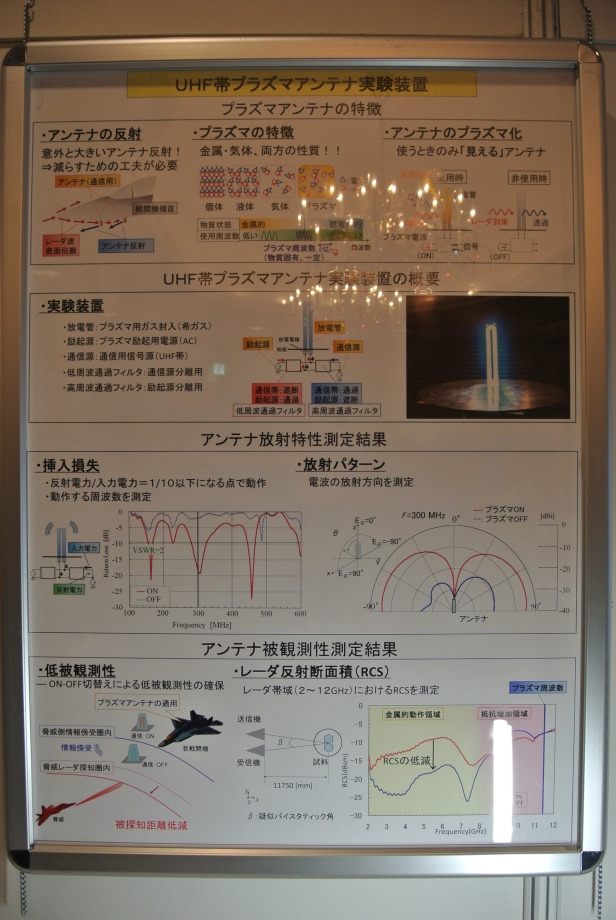
Survivability:
Spoiler
Aside from the stealth characteristics, the plane’s survivability is, peculiar.
Of minor note is the control surfaces are entirely electrically operated. This means that there are not conventional control lines to damage such as with pneumatically operated systems. For warthunder this is a relatively useful advantage, atleast for the niche cases where you get into guns range. No control lines to break means you’re relatively unlikely to die to HE rounds to the fuselage.
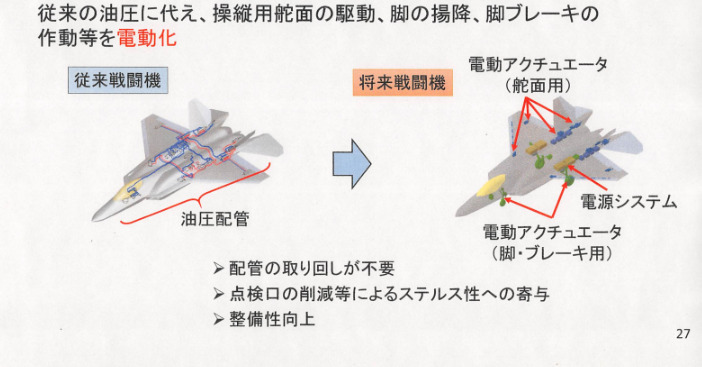
An IR/UV based MAWS system was also developed, designed to detect launches at very long ranges, and profile them based on type and threat factor through sensor fusion with the RWR.
Something unclear though, which matters significantly for the purposes of warthunder, is the existence of countermeasure dispensers. No research paper ever mentions systems relating to them, nor does any 3d model label components as such. That being said, on a few digital models there are a pair of unlabeled boxes, next to the engines on the underside. These are neither included in EW, control layouts, or cooling systems, but consistently show up. As such there is a possibility of them being a countermeasure dispenser, which at 2 dispenser units, would only give the aircraft 60 countermeasures.
But again, even that is just conjecture, as they’re not even labeled, it’s just the only thing I can think of them being seeing as they’re never specified as any other thing, and it would be weird for a modern fighter to entirely lack them. That being said, there is doctrinal reason for as to why they might not have been thought as necessary. Even by 5th generation standards, the F-3 was very aggressive in it’s efforts to stay undetectable, through significant research into passive detection systems, and the prior stated stealth functions. Along with this datalink was a core part of it’s designed use case, with networks of friendly units providing updates on location information to missiles once fired. This idea of firing from outside of detection and immediately going cold does significantly downplay the importance of dispensed countermeasures. Although again, to entirely forgo them seems weird.
Also this was just a prototype, it is very possible countermeasure integration would’ve been thought of at a later date, for the actual F-3.
Renderings:
Armaments:
Spoiler
The 26DMU had 4 internal weapons bays, 2 primary ones, holding up to 6x MRMs, and two secondary ones, each holding one IR missile, presumably AAM-5/B (/Upcoming C in theory, if it was actually finished). Additionally the plane features one internally one of the same JM61A2s as used on the F-2.
Which missiles it would use exactly, however, is something somewhat ambiguous. Early plans called for 4x AAM-4/Bs. However later models used for wind tunnel testing, along with the physically constructed weapons bay, were designed to fit 6x JNAAMs. However here is the issue of the JNAAM project never having been finished. While JNAAM was never finished, we do know that it would be a Meteor with a seeker based on the AAM-4B, so gaijin could simply add in a missile with mixed stats from the two, or just a plain old Meteor if they wanted something more “Realistic”. Since JNAAM’s end, Japan has been working on a domestic MRM to succeed the AAM-4, the AAM-6, which is currently planed for use on GCAP. Which as GCAP essentially replaced this project, I do believe there’s some credence to applying weapons planned for it onto this instead, however theoretical that may be.
AAM-6 Render
For air to ground armaments, there are several contenders. A few renders do show 4x externally mounted ASMs. While their type is ambiguous, they do most closely resemble ASM-3s. Alternatively, given that it was to succeed the F-2, which has since been slotted to get both, if it was finished for it’s role as their replacement. It could have potentially either get JASSM-ERs, Type-12SSMER, or Air Launched Type-12SSMERs. However these are all speculative loadouts, as none of these air to surface weapons were even in testing at the point of the aircraft’s design.
Possible armaments:
Canon:
JM61A2 (??? Rounds)
Primary Weapons Bay:
2x3 JNAAM
2x3 Meteor
2x2 AAM-4/B
2x2(??) AAM-6
Secondary Weapons Bays:
2x1 AAM-5/B
External Weapons:
4x ASM-3s
???JASSM-ER
??? Type-12SSM family
Of the possible MRMs, which would you like to see?
Specs:
Spoiler
Due to the nature of the progress, very little is known about the aircraft, however, we can tell roughly it’s size by the size of known objects in 3d models (AAM-4/5, XF9-1), we can calculate certain parameters. Additionally, “Research into Flight weight Structure Technology” specifies the construction to be around 11.6% lighter then conventional designs of the same size. Using an F-22 as a baseline, and accounting for the size difference, this would give us a rough weight calculation.
Length: 17.46 Meters
Wingspan: 13.70 Meters
Height: 4.08 Meters
Thrust: 294kn AB
Weight:16,475kg Empty (Estimation).
Top Speed: Mach2~
Conclussion:
Overall, this is a fairly unique plane for japan, which I would love to see. The Japanese domestic air TT in game is essentially dead, with nothing else coming until the F-35, which every country is going to get. It would be great to have a proper star for the JP air tree, as with how late the F-2 was added, it severely failed to live up to the hype. I know many of you want an armed Shinshin, and while that strictly speaking is not a possibility, this is very closely related to the project. A functional, but not armed prototype, in the same development family does lend significant credence to the functionality of the design, which otherwise I could see genuine contention around the technical possibility of production.
Honestly, I agree the DMU itself is not the most fitting plane to come into game. As the particular model itself really was not planned to be directly made. However, given more then the neccesary components exist as part of the F-X project for an unfinished prototype to be added to game. Something from it does deserve to be added, and there is no more complete overview of the development done then the DMU series.
- Yes
- No
- AAM-4/B
- Meteor
- JNAAM
- AAM-6
- Voted “No” to implementation
[/details]
Sources:
(Primary)
防衛装備庁 技術シンポジウム2018
将来の戦闘機に関する研究開発ビジョン
RCSの低減に寄与する メタマテリアル 電子装備研究所 センサ技術研究部 電子戦基盤研究室 防衛技官 櫻 井 宗 晃
高精度FEMモデルを適用した航空機構造解析作業の自動化
.葉山賢司ほか5名「川崎重工業の風洞試験設備の概要」日本航空宇宙学会誌 第64巻 第4号P.9-14、2016 年 4 月
4-27-2005-372A-AC-0003 Research and Prototypes of Radome for Stealth Fighter (Part 1), 4-AC-27079
4-26-2000-030A-G-0013 Research and Prototype of Stealth Intake Duct, 4-G-26024
4-27-2005-372A-AC-0001 Research and Prototype of a vitrual vehicle for future fighter aircraft systems, 4-AC-27061
4-26-2000-030A-G-0022 Research and Prototypes of Fire Control Systems for Fighter Aircraft (Part 3), 4-G-26055
Research and Study on Improving Fighter aircraft sensor capabilities, CPS-AE99036
Overview of Activities for future fighter aircraft and future prospects. November 16, 2016
外部評価報告書 「将来戦闘機用エンジンの研究」 , March 9, 2011, ATLA
外部評価報告書 「将来戦闘機用エンジンの研究」 , Jan 25, 2016, ATLA
“UHF Band Plasma Antenna Experimental Equipment”, 2016, Defense Expo Symposium
External Evaluation Report “Research into Flight weight Structure Technology”, December 16, 2016, ATLA
2017 Defense Expo Symposium
2016 Defense Expo Symposium
2015 Defense Expo Symposium
2014 Defense Expo Symposium
“Research and Prototype of Major Components of Future Aircraft” 1993
“Research and Prototype of Stealth and High Maneuverability Aircraft Simulator” 2001
“Research and Prototype of High Maneuverability Flight Control System” 2007
https://www.mod.go.jp/j/approach/agenda/meeting/seisaku/index.html
https://warp.da.ndl.go.jp/info:ndljp/pid/11339364/www.mod.go.jp/j/approach/hyouka/seisaku/results/26/jizen.html
https://www.soumu.go.jp/main_sosiki/hyouka/seisaku_n/portal/index/kenkyu/mod.html#/
https://www.mod.go.jp/j/policy/agenda/meeting/seisaku/index.html
(I have PDFs of almost all of the sources, if anyone inquires for a specific one i can send them, I simply am not linking them due to many of them being stored in private drive folders.)

